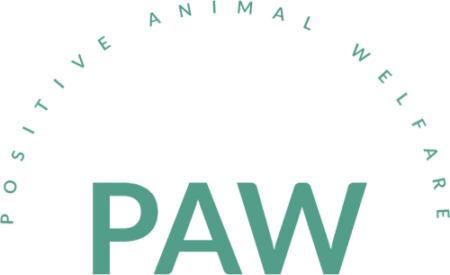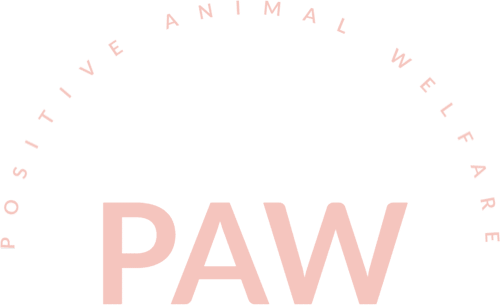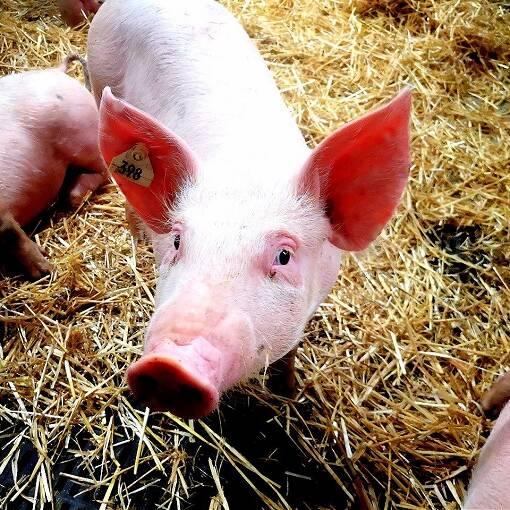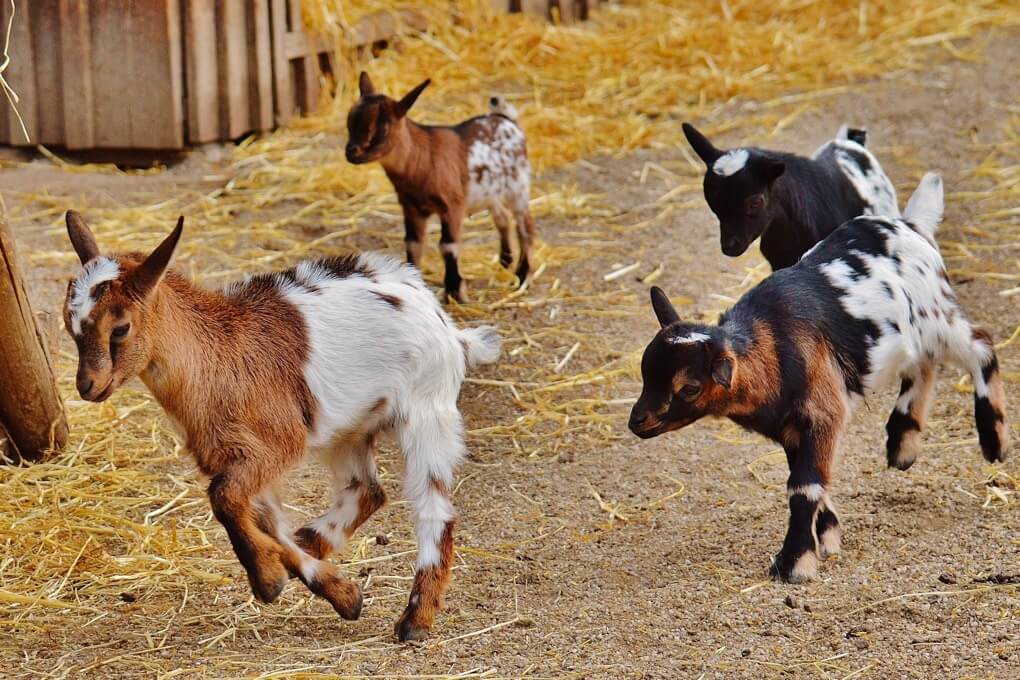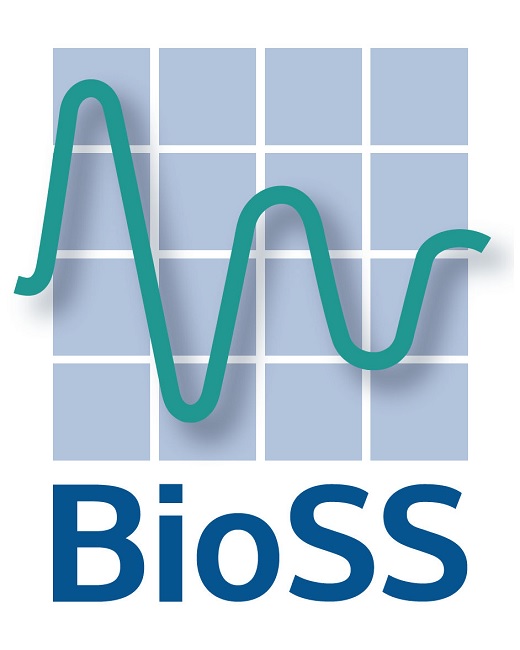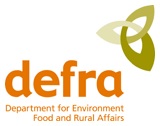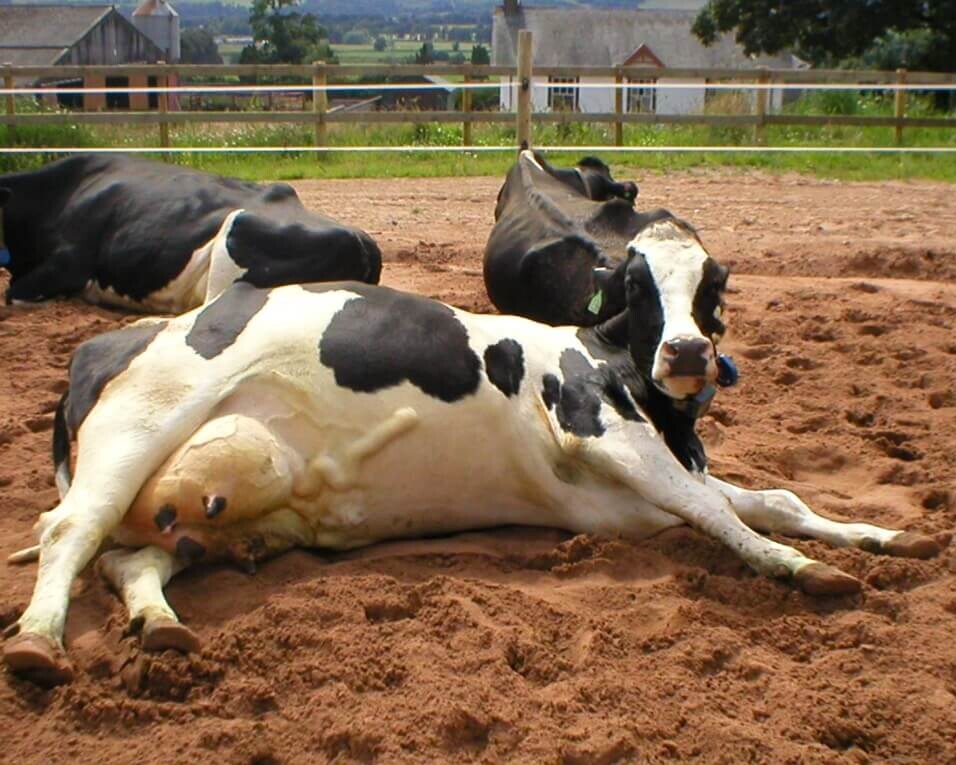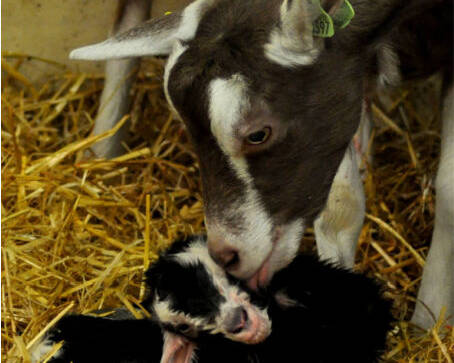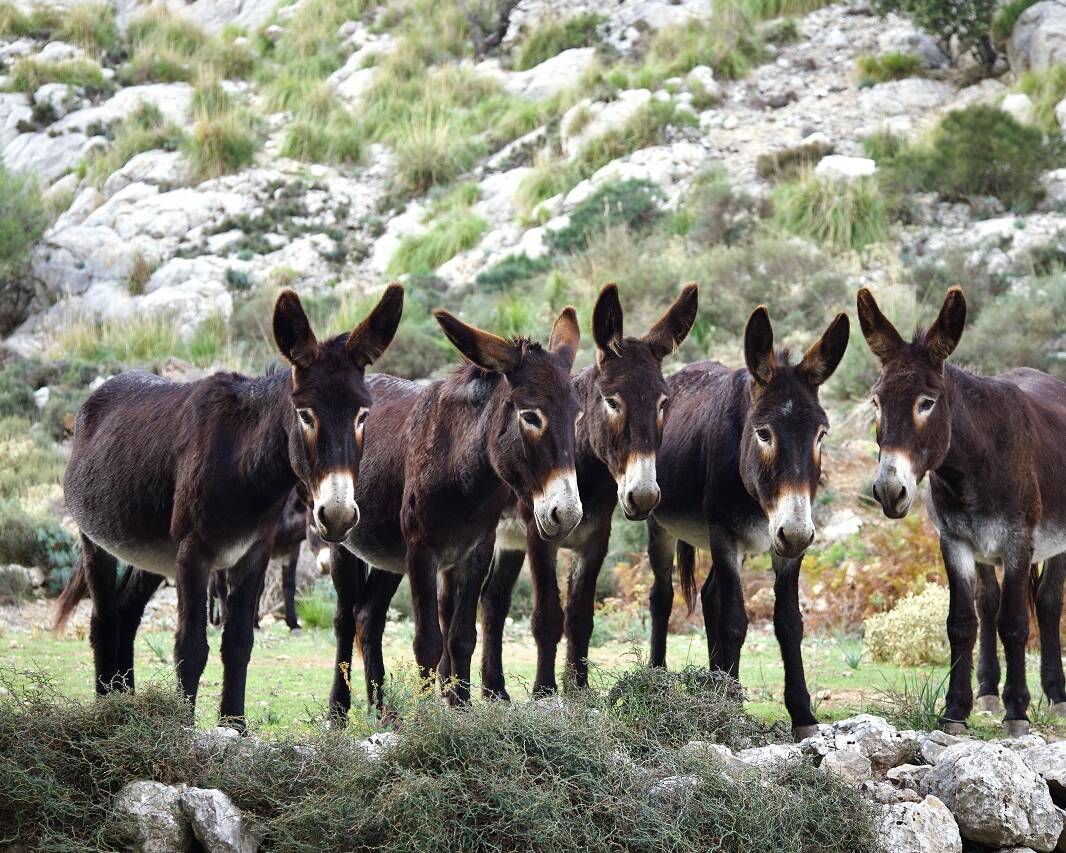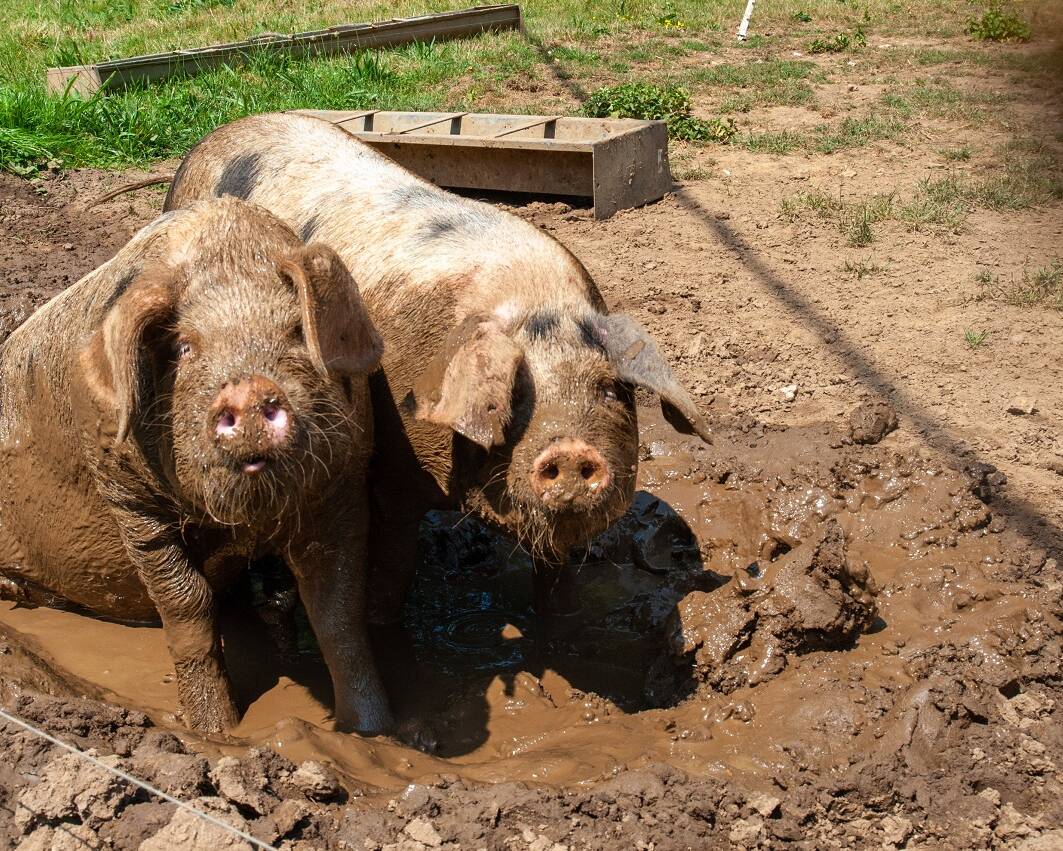Qualitative Behaviour Assessment: quantifying the emotionally expressive qualities of animal behaviour
Qualitative Behaviour Assessment (QBA) is a method that asks human observers to describe and score the emotionally expressive qualities that animals show when they engage with their environment1. Animals can perform any given behaviour (e.g. walking or resting) in different expressive styles, presenting us with a dynamic body language that can, for example, be described as tense and anxious, or relaxed and joyful. Because it includes positive emotions QBA is a valuable method for assessing quality of life. It is, for example, the main indicator for ‘positive emotional state’ in various EU Welfare Quality® assessment protocols2.
Background
Most scientific methods for animal welfare assessment focus on measuring detailed physical aspects of an animal’s health and behaviour, however QBA is designed to assess the dynamic whole animal as it engages with its environment. At this level of integration animals are primarily viewed as sentient, psychologically expressive beings, whose quality of movement reflects their quality of experience. By describing and quantifying such qualities QBA provides useful information, that, in combination with other health and welfare measures, can help us to more confidently assess an animal’s state of well-being3. One of QBA’s strengths is that it captures subtle shifts in demeanour that are difficult to measure otherwise. A transition from a relaxed/content to a more tense/lethargic expression, for example, often indicates the onset of illness4. By contrast a shift towards greater attentiveness and boisterousness in response to environmental enrichment signifies the animals’ enjoyment and a higher level of positive welfare5.
Qualitative Behaviour Assessment (QBA): its concept, scientific validation and application
This is an interview with Professor Francoise Wemelsfelder (SRUC) on QBA, made for the open online course in animal behaviour and welfare by The University of Edinburgh. Francoise talks about the ideas underlying QBA, the scientific validation of QBA, and the role QBA can play in practical animal welfare assessment.
QBA can be performed in different ways. A good way to involve stakeholders in a project is to invite them to select 15-20 QBA descriptors particularly suited to that project. Another, faster way is to provide participants with a ready-made ‘fixed list’ of descriptors based on existing scientific literature for a species. QBA term lists should balance positive and negative emotions (valence), and higher and lower energy levels (arousal). Scores based on these terms are analysed using multi-variate statistics, generating dimensional patterns of emotional expressivity. An extensive body of scientific publications shows that with appropriate training, QBA can be performed reliably and make a valuable contribution to scientific animal welfare assessment6.
References:
- Wemelsfelder, F. 2007. How animals communicate quality of life: the qualitative assessment of animal behaviour. Animal Welfare 16(S) 25-31. https://doi.org/10.1017/S0962728600031699
- Keeling, L, Evans, A, Forkman, B & Kjaernes, U. 2013. Welfare Quality® principles and criteria. in H Blokhuis, M Miele, I Veissier & B Jones (eds), Improving farm animal welfare: science and society working together: the Welfare Quality approach. Wageningen Academic Publishers, Holland, pp. 91-114. https://doi.org/10.3920/978-90-8686-770-7_5
- Wemelsfelder, F., Hunter, E.A., Mendl, M.T. and Lawrence, A.B. 2001. Assessing the ‘whole animal’: a Free-Choice-Profiling approach. Animal Behaviour 62, 209-220. https://doi.org/10.1006/anbe.2001.1741
- De Boyer des Roches, A., Lussert, A., Faurea, M., Herry, V., Rainard, P., Duranda, D., Wemelsfelder, F., Foucras, G. 2018. Dairy cows under experimentally-induced Escherichia coli mastitis show negative emotional states assessed through Qualitative Behaviour Assessment. Applied Animal Behaviour Science 206, 1-11. https://doi.org/10.1016/j.applanim.2018.06.004
- Shaw, N., Wemelsfelder, F., Riley, L. 2022. Bark to the future: The welfare of domestic dogs during interaction with a positively reinforcing artificial agent. Applied Animal Behaviour Science 249, 105595. https://doi.org/10.1016/j.applanim.2022.105595
- Fleming, P.A., Clarke, T., Wickham, S.L., Stockman, C.A., Barnes, L., Collins, T., and Miller, D.W. 2016. The contribution of qualitative behavioural assessment to appraisal of livestock welfare. Animal Production Science 56(10), 1569-1578. https://doi.org/10.1071/AN15101
- Cooper, R., Wemelsfelder, F. 2020. Qualitative Behaviour Assessment as an indicator of animal emotional welfare in farm assurance. Livestock 25 (4), 2-5. https://doi.org/10.12968/live.2020.25.4.180
Project application
There is growing interest in the practical implementation of QBA as a tool for assessing emotional well-being in animals7. For example, the UK retailer Waitrose recently invited SRUC to collaborate in the roll-out of QBA across 12 Waitrose own-brand supply chains (see also Box 1).
Box 1: The QBA mobile application
SRUC (Scotland’s Rural College) is in the process of building a new QBA mobile application for Android and iOS. Development of the app is taking place in collaboration with Waitrose and Partners, and despite being at an early stage has won several awards.


Once publicly available, the app will be usable with any animal species in any context, including farm, laboratory, kenneled, zoo and wild animals. Users can create QBA descriptors that are specifically meaningful to their organisation and culture. The app will analyse scores on these descriptors and show the outcome in an easy-to-read chart for emotional wellbeing that compares an assessment to previous assessments of animals in a project.
The app offers enhanced statistical reliability thanks to the contribution of a built-in algorithm for data normalisation by statistical experts at Biomathematics and Statistics Scotland (BioSS).
The Project Team:
Other links:
QBA Further Resources
This section is a work in progress. It provides a comprehensive collection of published refereed papers and book chapters that either use or discuss QBA. Some papers focus on QBA, others use it as part of larger welfare assessment studies or discuss it as part of wider reviews. To provide some structure, the bibliography is divided into subsections that focus on different animal species or themes like positive welfare or human-animal relationships. Papers can appear in more than one section.
Click on the section titles below to access reference lists.
Chen, X., Ogdahl, W., Hulsman Hanna, L.L., Dahlen, C.R., Riley, D.G., Wagner, S.A., Berg, E.P., Sun, X., 2021. Evaluation of beef cattle temperament by eye temperature using infrared thermography technology. Comput Electron Agric 188. https://doi.org/10.1016/j.compag.2021.106321
Cooke, A.S., Mullan, S., Morten, C., Hockenhull, J., Le Grice, P., Le Cocq, K., Lee, M.R.F., Cardenas, L.M., Rivero, M.J., 2023. Comparison of the welfare of beef cattle in housed and grazing systems: hormones, health, and behaviour. Journal of Agricultural Science. https://doi.org/10.1017/S0021859623000357
Cooke, A.S., Mullan, S.M., Morten, C., Hockenhull, J., Lee, M.R.F., Cardenas, L.M., Rivero, M.J., 2022. V-QBA vs. QBA—How Do Video and Live Analysis Compare for Qualitative Behaviour Assessment? Front Vet Sci 9. https://doi.org/10.3389/fvets.2022.832239
Jorquera-Chavez, M., Fuentes, S., Dunshea, F.R., Jongman, E.C., Warner, R.D., 2019. Computer vision and remote sensing to assess physiological responses of cattle to pre-slaughter stress, and its impact on beef quality: A review. Meat Sci. https://doi.org/10.1016/j.meatsci.2019.05.007
Kirchner, M.K., Schulze Westerath, H., Knierim, U., Tessitore, E., Cozzi, G., Winckler, C., 2014a. On-farm animal welfare assessment in beef bulls: Consistency over time of single measures and aggregated Welfare Quality® scores. Animal 8, 461–469. https://doi.org/10.1017/S1751731113002267
Kirchner, M.K., Westerath, S.H., Knierim, U., Tessitore, E., Cozzi, G., Pfeiffer, C., Winckler, C., 2014b. Application of the Welfare Quality® assessment system on European beef bull farms. Animal 8, 827–835. https://doi.org/10.1017/S1751731114000366
Lawrence, P., McGee, M., Earley, B., 2022. Animal welfare index: an animal welfare evaluation of beef production farms in Ireland. J Appl Anim Res 50, 643–655. https://doi.org/10.1080/09712119.2022.2126478
Morales, A.M.T., Ceballos, M.C., Londoño, G.C., Cardona, C.A.C., Ramírez, J.F.N., da Costa, M.J.R.P., 2017. Welfare of cattle kept in intensive silvopastoral systems: A case report. Revista Brasileira de Zootecnia 46, 478–488. https://doi.org/10.1590/S1806-92902017000600002
Morten, C., Cooke, A., Hockenhull, J., Cardenas, L., Jordana Rivero, M., 2021. 19. Comparison between qualitative behavioural assessment (QBA) on winter housed beef cattle scored by video and live. Animal – science proceedings 12. https://doi.org/10.1016/j.anscip.2021.03.020
Parham, J.T., Tanner, A.E., Wahlberg, M.L., Grandin, T., Lewis, R.M., 2019. Subjective methods to quantify temperament in beef cattle are insensitive to the number and biases of observers. Appl Anim Behav Sci 212, 30–35. https://doi.org/10.1016/j.applanim.2019.01.005
Racciatti, D.S., Bottegal, D.N., Aguilar, N.M., Menichelli, M.L., Soteras, T., Zimerman, M., Cancino, A.K., Marcoppido, G.A., Blanco-Penedo, I., Lloveras, J.P., Langman, L.E., 2022. Development of a welfare assessment protocol for practical application in Argentine feedlots. Appl Anim Behav Sci 253. https://doi.org/10.1016/j.applanim.2022.105662
Rocha Góis, K.C., Ceballos, M.C., Sant’Anna, A.C., da Costa, M.J.R.P., 2016. Using an observer rating method to assess the effects of rotational stocking method on beef cattle temperament over time. Revista Brasileira de Zootecnia 45, 501–508. https://doi.org/10.1590/S1806-92902016000900001
Sant’Anna, A.C., Paranhos da Costa, M.J.R., 2013. Validity and feasibility of qualitative behavior assessment for the evaluation of Nellore cattle temperament. Livest Sci 157, 254–262. https://doi.org/10.1016/j.livsci.2013.08.004
Stockman, C.A., Collins, T., Barnes, A.L., Miller, D., Wickham, S.L., Beatty, D.T., Blache, D., Wemelsfelder, F., Fleming, P.A., 2013. Flooring and driving conditions during road transport influence the behavioural expression of cattle. Appl Anim Behav Sci 143, 18–30. https://doi.org/10.1016/j.applanim.2012.11.003
Stockman, C.A., Collins, T., Barnes, A.L., Miller, D., Wickham, S.L., Beatty, D.T., Blache, D., Wemelsfelder, F., Fleming, P.A., 2011. Qualitative behavioural assessment and quantitative physiological measurement of cattle naïve and habituated to road transport. Anim Prod Sci 51, 240–249. https://doi.org/10.1071/AN10122
Stockman, C.A., McGilchrist, P., Collins, T., Barnes, A.L., Miller, D., Wickham, S.L., Greenwood, P.L., Cafe, L.M., Blache, D., Wemelsfelder, F., Fleming, P.A., 2012. Qualitative Behavioural Assessment of Angus steers during pre-slaughter handling and relationship with temperament and physiological responses. Appl Anim Behav Sci 142, 125–133. https://doi.org/10.1016/j.applanim.2012.10.016
Taylor, E., Dunston-Clarke, E., Brookes, D., Jongman, E., Linn, B., Barnes, A., Miller, D., Fisher, A., Collins, T., 2023. Developing a welfare assessment protocol for Australian lot-fed cattle. Frontiers in Animal Science 4. https://doi.org/10.3389/fanim.2023.1256670
Vindevoghel, T. V., Fleming, P.A., Hyndman, T.H., Musk, G.C., Laurence, M., Collins, T., 2019. Qualitative Behavioural Assessment of Bos indicus cattle after surgical castration. Appl Anim Behav Sci 211, 95–102. https://doi.org/10.1016/j.applanim.2018.11.004
Wigham, E.E., Butterworth, A., Wotton, S., 2018. Assessing cattle welfare at slaughter – Why is it important and what challenges are faced? Meat Sci. https://doi.org/10.1016/j.meatsci.2018.06.010
Andreasen, S.N., Wemelsfelder, F., Sandøe, P., Forkman, B., 2013. The correlation of Qualitative Behavior Assessments with Welfare Quality® protocol outcomes in on-farm welfare assessment of dairy cattle. Appl Anim Behav Sci 143. https://doi.org/10.1016/j.applanim.2012.11.013
Bokkers, E.A.M., De Vries, M., Antonissen, I.C.M.A., De Boer, I.J.M., 2012. Inter- and intra-observer reliability of experienced and inexperienced observers for the Qualitative Behaviour Assessment in dairy cattle. Animal Welfare 21. https://doi.org/10.7120/09627286.21.3.307
Ceballos, M.C., Góis, K.C.R., Sant’Anna, A.C., Wemelsfelder, F., Paranhos da Costa, M., 2021. Reliability of qualitative behavior assessment (QBA) versus methods with predefined behavioral categories to evaluate maternal protective behavior in dairy cows. Appl Anim Behav Sci 236. https://doi.org/10.1016/j.applanim.2021.105263
de Boyer des Roches, A., Lussert, A., Faure, M., Herry, V., Rainard, P., Durand, D., Wemelsfelder, F., Foucras, G., 2018. Dairy cows under experimentally-induced Escherichia coli mastitis show negative emotional states assessed through Qualitative Behaviour Assessment. Appl Anim Behav Sci 206. https://doi.org/10.1016/j.applanim.2018.06.004
De Graaf, S., Ampe, B., Tuyttens, F.A.M., 2017. Assessing dairy cow welfare at the beginning and end of the indoor period using the Welfare Quality® protocol. Animal Welfare 26. https://doi.org/10.7120/09627286.26.2.213
De Rosa, G., Grasso, F., Winckler, C., Bilancione, A., Pacelli, C., Masucci, F., Napolitano, F., 2015. Application of the Welfare Quality protocol to dairy buffalo farms: Prevalence and reliability of selected measures. J Dairy Sci 98. https://doi.org/10.3168/jds.2015-9350
De Vries, M., Engel, B., Den Uijl, I., Van Schaik, G., T. Dijkstra, De Boer, I.J.M., Bokkers, E.A.M., 2013. Assessment time of the Welfare Quality® protocol for dairy cattle. Animal Welfare 22. https://doi.org/10.7120/09627286.22.1.085
dos Santos, S.G.C.G., Saraiva, E.P., de França Carvalho Fonsêca, V., Saraiva, C.A.S., Neto, S.G., da Silva Fidelis, S., de Amorim, M.L.C.M., dos Santos, J.D.C., 2020. Assessment of welfare indicators in grazing dairy cows in Northeast Brazil. Semina:Ciencias Agrarias 41. https://doi.org/10.5433/1679-0359.2020v41n6Supl2p3225
Ebinghaus, A., Ivemeyer, S., Knierim, U., 2018. Human and farm influences on dairy cows´ responsiveness towards humans – a cross-sectional study. PLoS One 13. https://doi.org/10.1371/journal.pone.0209817
Ebinghaus, A., Ivemeyer, S., Lauks, V., Santos, L., Brügemann, K., König, S., Knierim, U., 2017. How to measure dairy cows’ responsiveness towards humans in breeding and welfare assessment? A comparison of selected behavioural measures and existing breeding traits. Appl Anim Behav Sci 196. https://doi.org/10.1016/j.applanim.2017.07.006
Ebinghaus, A., Ivemeyer, S., Rupp, J., Knierim, U., 2016. Identification and development of measures suitable as potential breeding traits regarding dairy cows’ reactivity towards humans. Appl Anim Behav Sci 185. https://doi.org/10.1016/j.applanim.2016.09.010
Ebinghaus, A., Knierim, U., Simantke, C., Palme, R., Ivemeyer, S., 2020. Fecal cortisol metabolites in dairy cows: A cross-sectional exploration of associations with animal, stockperson, and farm characteristics. Animals 10. https://doi.org/10.3390/ani10101787
Ebinghaus, A., Matull, K., Knierim, U., Ivemeyer, S., 2022. Associations between Dairy Herds’ Qualitative Behavior and Aspects of Herd Health, Stockperson and Farm Factors—A Cross-Sectional Exploration. Animals 12. https://doi.org/10.3390/ani12020182
Gutmann, A.K., Schwed, B., Tremetsberger, L., Winckler, C., 2015. Intra-day variation of qualitative behaviour assessment outcomes in dairy cattle. Animal Welfare 24. https://doi.org/10.7120/09627286.24.3.319
Hulsman Hanna, L.L., Hieber, J.K., Yu, H., Celestino, E.F., Dahlen, C.R., Wagner, S.A., Riley, D.G., 2019. Blood collection has negligible impact on scoring temperament in Angus-based weaned calves. Livest Sci 230. https://doi.org/10.1016/j.livsci.2019.103835
Knierim, U., Winckler, C., 2009. On-farm welfare assessment in cattle: Validity, reliability and feasibility issues and future perspectives with special regard to the Welfare Quality® approach, in: Animal Welfare. https://doi.org/10.1017/s0962728600000865
Papageorgiou, M., Simitzis, P.E., 2022. Positive Welfare Indicators in Dairy Animals. Dairy. https://doi.org/10.3390/dairy3040056
Rousing, T., Wemelsfelder, F., 2006. Qualitative assessment of social behaviour of dairy cows housed in loose housing systems. Appl Anim Behav Sci 101. https://doi.org/10.1016/j.applanim.2005.12.009
Russell, A.L., Randall, L. V., Kaler, J., Eyre, N., Green, M.J., 2023. Use of qualitative behavioural assessment to investigate affective states of housed dairy cows under different environmental conditions. Front Vet Sci 10. https://doi.org/10.3389/fvets.2023.1099170
Schmitz, L., Ebinghaus, A., Ivemeyer, S., Domas, L., Knierim, U., 2020. Validity aspects of behavioural measures to assess cows’ responsiveness towards humans. Appl Anim Behav Sci 228. https://doi.org/10.1016/j.applanim.2020.105011
Arena, L., Wemelsfelder, F., Messori, S., Ferri, N., Barnard, S., 2019. Development of a fixed list of terms for the qualitative behavioural assessment of shelter dogs. PLoS One 14. https://doi.org/10.1371/journal.pone.0212652
Arena, L., Wemelsfelder, F., Messori, S., Ferri, N., Barnard, S., 2017. Application of Free Choice Profiling to assess the emotional state of dogs housed in shelter environments. Appl Anim Behav Sci 195, 72–79. https://doi.org/10.1016/j.applanim.2017.06.005
Berteselli, G.V., Arena, L., Candeloro, L., Dalla Villa, P., De Massis, F., 2019. Interobserver agreement and sensitivity to climatic conditions in sheltered dogs’ welfare evaluation performed with welfare assessment protocol (Shelter Quality protocol). Journal of Veterinary Behavior 29, 45–52. https://doi.org/10.1016/j.jveb.2018.09.003
Csoltova, E., Mehinagic, E., 2020. Where Do We Stand in the Domestic Dog (Canis familiaris) Positive-Emotion Assessment: A State-of-the-Art Review and Future Directions. Front Psychol. https://doi.org/10.3389/fpsyg.2020.02131
Cuglovici, D.A., 2023. What can associations between emotional states and management-based measures teach us about shelter dogs’ welfare? Journal of Veterinary Behavior 69–70, 32–38. https://doi.org/10.1016/j.jveb.2023.11.001
de Winkel, T., van der Steen, S., Enders-Slegers, M.-J., Griffioen, R., Haverbeke, A., Groenewoud, D., Hediger, K., 2024. Observational Behaviors and Emotions to Assess Welfare of Dogs A Systematic Review. Journal of Veterinary Behavior. https://doi.org/10.1016/j.jveb.2023.12.007
Demirbas, Y.S., Safak, E., Emre, B., Piskin, İ., Ozturk, H., Da Graça Pereira, G., 2017. Rehabilitation program for urban free–ranging dogs in a shelter environment can improve behavior and welfare. Journal of Veterinary Behavior: Clinical Applications and Research 18, 1–6. https://doi.org/10.1016/j.jveb.2016.11.004
Flint, H.E., Atkinson, M., Lush, J., Hunt, A.B.G., King, T., 2023. Long-Lasting Chews Elicit Positive Emotional States in Dogs during Short Periods of Social Isolation. Animals 13. https://doi.org/10.3390/ani13040552
Flint, H.E., Hunt, A.B.G., Logan, D.W., King, T., 2024a. Daily dosing of cannabidiol (CBD) demonstrates a positive effect on measures of stress in dogs during repeated exposure to car travel. J Anim Sci 102. https://doi.org/10.1093/jas/skad414
Flint, H.E., Weller, J.E., Parry-Howells, N., Ellerby, Z.W., McKay, S.L., King, T., 2024b. Evaluation of indicators of acute emotional states in dogs. Sci Rep 14, 6406. https://doi.org/10.1038/s41598-024-56859-9
Fratkin, J.L., Sinn, D.L., Thomas, S., Hilliard, S., Olson, Z., Gosling, S.D., 2015. Do you see what I see? Can non-experts with minimal training reproduce expert ratings in behavioral assessments of working dogs? Behavioural Processes 110, 105–116. https://doi.org/10.1016/j.beproc.2014.09.028
Harvey, N.D., Moesta, A., Kappel, S., Wongsaengchan, C., Harris, H., Craigon, P.J., Fureix, C., 2019. Could greater time spent displaying waking inactivity in the home environment be a marker for a depression-like state in the domestic dog? Animals 9. https://doi.org/10.3390/ani9070420
Hecht, J., Miklósi, Á., Gácsi, M., 2012. Behavioral assessment and owner perceptions of behaviors associated with guilt in dogs. Appl Anim Behav Sci 139, 134–142. https://doi.org/10.1016/j.applanim.2012.02.015
Holder, T.R.N., Nichols, C., Summers, E., Roberts, D.L., Bozkurt, A., 2023. Towards a Multimodal Synchronized System for Quantifying Psychophysiological States in Canine Assisted Interactions, in: ACM International Conference Proceeding Series. Association for Computing Machinery. https://doi.org/10.1145/3637882.3637886
Hunt, A.B.G., Flint, H.E., Logan, D.W., King, T., 2023. A single dose of cannabidiol (CBD) positively influences measures of stress in dogs during separation and car travel. Front Vet Sci 10. https://doi.org/10.3389/fvets.2023.1112604
Kartashova, I.A., Ganina, K.K., Karelina, E.A., Tarasov, S.A., 2021. How to evaluate and manage stress in dogs – A guide for veterinary specialist. Appl Anim Behav Sci. https://doi.org/10.1016/j.applanim.2021.105458
King, T., Flint, H.E., Hunt, A.B.G., Werzowa, W.T., Logan, D.W., 2022. Effect of Music on Stress Parameters in Dogs during a Mock Veterinary Visit. Animals 12. https://doi.org/10.3390/ani12020187
Lamon, T.K., Slater, M.R., Moberly, H.K., Budke, C.M., 2021. Welfare and quality of life assessments for shelter dogs: A scoping review. Appl Anim Behav Sci. https://doi.org/10.1016/j.applanim.2021.105490
Menchetti, L., Righi, C., Guelfi, G., Enas, C., Moscati, L., Mancini, S., Diverio, S., 2019. Multi-Operator Qualitative Behavioural Assessment for dogs entering the shelter. Appl Anim Behav Sci 213, 107–116. https://doi.org/10.1016/j.applanim.2019.02.008
Pedersen, H., Malm, K., 2023. Cross-disciplinary method development for assessing dog welfare in canine-assisted pedagogical work: a pilot study. Journal of Applied Animal Welfare Science. https://doi.org/10.1080/10888705.2023.2211205
Shaw, N., Wemelsfelder, F., Riley, L.M., 2022. Bark to the future: The welfare of domestic dogs during interaction with a positively reinforcing artificial agent. Appl Anim Behav Sci 249. https://doi.org/10.1016/j.applanim.2022.105595
Somppi, S., Törnqvist, H., Koskela, A., Vehkaoja, A., Tiira, K., Väätäjä, H., Surakka, V., Vainio, O., Kujala, M. V., 2022. Dog–Owner Relationship, Owner Interpretations and Dog Personality Are Connected with the Emotional Reactivity of Dogs. Animals 12. https://doi.org/10.3390/ani12111338
Stubsjøen, S.M., Moe, R.O., Bruland, K., Lien, T., Muri, K., 2020. Reliability of observer ratings: Qualitative behaviour assessments of shelter dogs using a fixed list of descriptors. Vet Anim Sci 10. https://doi.org/10.1016/j.vas.2020.100145
Stubsjøen, S.M., Moe, R.O., Johannessen, C., Larsen, M., Madsen, H., Muri, K., 2022. Can shelter dog observers score behavioural expressions consistently over time? Acta Vet Scand 64. https://doi.org/10.1186/s13028-022-00654-x
Travnik, I.C., MacHado, D.S., Sant’Anna, A.C., 2022. Do you see the same cat that I see? Inter- and intra-observer reliability for Qualitative Behaviour Assessment as temperament indicator in domestic cats. Animal Welfare 31. https://doi.org/10.7120/09627286.31.3.004
Travnik, I.C., Sant’Anna, A.C., 2021. Do you see the same cat that I see? Relationships between Qualitative Behaviour Assessment and indicators traditionally used to assess temperament in domestic cats. Animal Welfare 30. https://doi.org/10.7120/09627286.30.2.211
Walker, J., Dale, A., Waran, N., Clarke, N., Farnworth, M., Wemelsfelder, F., 2010. The assessment of emotional expression in dogs using a Free Choice Profiling methodology. Animal Welfare 19, 75–84.
Walker, J.K., Dale, A.R., D’Eath, R.B., Wemelsfelder, F., 2016. Qualitative Behaviour Assessment of dogs in the shelter and home environment and relationship with quantitative behaviour assessment and physiological responses. Appl Anim Behav Sci 184, 97–108. https://doi.org/10.1016/j.applanim.2016.08.012
Zito, S., Walker, J., Carolyn Gates, M., Dale, A., 2019. A preliminary description of companion cat, managed stray cat, and unmanaged stray cat welfare in auckland, New Zealand using a 5-component assessment scale. Front Vet Sci 6. https://doi.org/10.3389/fvets.2019.00040
Anders, N., Hannaas, S., Saltskår, J., Schuster, E., Tenningen, M., Totland, B., Vold, A., Øvredal, J.T., Breen, M., 2022. Vitality as a measure of animal welfare during purse seine pumping related crowding of Atlantic mackerel (Scomber scrombrus). Sci Rep 12. https://doi.org/10.1038/s41598-022-26373-x
Bovenkerk, B., Meijboom, F.L.B., 2013. Fish Welfare in Aquaculture: Explicating the Chain of Interactions Between Science and Ethics. J Agric Environ Ethics 26, 41–61. https://doi.org/10.1007/s10806-012-9395-x
Browning, H., 2023. Improving welfare assessment in aquaculture. Front Vet Sci 10. https://doi.org/10.3389/fvets.2023.1060720
Huntingford, F., Rey, S., Quaggiotto, M.M., 2020. Behavioural fever, fish welfare and what farmers and fishers know. Appl Anim Behav Sci 231. https://doi.org/10.1016/j.applanim.2020.105090
Jarvis, S., Ellis, M.A., Turnbull, J.F., Rey Planellas, S., Wemelsfelder, F., 2021. Qualitative Behavioral Assessment in Juvenile Farmed Atlantic Salmon (Salmo salar): Potential for On-Farm Welfare Assessment. Front Vet Sci 8. https://doi.org/10.3389/fvets.2021.702783
Seamon, D., Wood, S.W., 2021. ENVIRONMENTAL & ARCHITECTURAL PHENOMENOLOGY (winter/spring 2021) Theory and Practice of Cladistics View project Animals and Plants in Place View project. https://doi.org/10.1080/26892618.2020.185838
Wiese, T.R., Haskell, M., Jarvis, S., Rey-Planellas, S., Turnbull, J., 2023a. Concerns and research priorities for Scottish farmed salmon welfare – An industry perspective. Aquaculture 566. https://doi.org/10.1016/j.aquaculture.2023.739235
Wiese, T.R., Rey Planellas, S., Betancor, M., Haskell, M., Jarvis, S., Davie, A., Wemelsfelder, F., Turnbull, J.F., 2023b. Qualitative Behavioural Assessment as a welfare indicator for farmed Atlantic salmon (Salmo salar) in response to a stressful challenge. Front Vet Sci 10, 1260090. https://doi.org/10.3389/fvets.2023.1260090
Barrell, G.K., 2019. An Appraisal of Methods for Measuring Welfare of Grazing Ruminants. Front Vet Sci. https://doi.org/10.3389/fvets.2019.00289
Battini, M., Barbieri, S., Vieira, A., Can, E., Stilwell, G., Mattiello, S., 2018. The use of qualitative behaviour assessment for the on-farm welfare assessment of dairy goats. Animals 8. https://doi.org/10.3390/ani8070123
Cockram, M.S., Murphy, E., Ringrose, S., Wemelsfelder, F., Miedema, H.M., Sandercock, D.A., 2012. Behavioural and physiological measures following treadmill exercise as potential indicators to evaluate fatigue in sheep. Animal 6, 1491–1502. https://doi.org/10.1017/S1751731112000638
Colitti, K., Mitchell, M., Langford, F., 2024. Sheep fatigue during transport: Lost in translation? Animal Welfare 33, e13. https://doi.org/10.1017/awf.2024.13
Collins, T., Anthony, U.M.C., Dunston-Clarke, E.J., Fleming, P.A., 2021. Feasibility of a Sheep Welfare Assessment Tool in the Pre-export Phase of Australian Live Export Industry. Frontiers in Animal Science 2. https://doi.org/10.3389/fanim.2021.687162
Collins, T., Stockman, C.A., Barnes, A.L., Miller, D.W., Wickham, S.L., Fleming, P.A., 2018. Qualitative behavioural assessment as a method to identify potential stressors during commercial sheep transport. Animals 8. https://doi.org/10.3390/ani8110209
Diaz-Lundahl, S., Hellestveit, S., Stubsjøen, S.M., Phythian, C.J., Moe, R.O., Muri, K., 2019. Intra-and inter-observer reliability of qualitative behaviour assessments of housed sheep in Norway. Animals 9. https://doi.org/10.3390/ani9080569
Grant, E.P., Brown, A., Wickham, S.L., Anderson, F., Barnes, A.L., Fleming, P.A., Miller, D.W., 2018. What can the quantitative and qualitative behavioural assessment of videos of sheep moving through an autonomous data capture system tell us about welfare? Appl Anim Behav Sci 208, 31–39. https://doi.org/10.1016/j.applanim.2018.08.010
Grant, E.P., Wickham, S.L., Anderson, F., Barnes, A.L., Fleming, P.A., Miller, D.W., 2020a. Preliminary findings on a novel behavioural approach for the assessment of pain and analgesia in lambs subject to routine husbandry procedures. Animals 10, 1–13. https://doi.org/10.3390/ani10071148
Grant, E.P., Wickham, S.L., Anderson, F., Barnes, A.L., Fleming, P.A., Miller, D.W., 2020b. Behavioural assessment of sheep is sensitive to level of gastrointestinal parasite infection. Appl Anim Behav Sci 223. https://doi.org/10.1016/j.applanim.2019.104920
Grant, E.P., Wickham, S.L., Anderson, F., Barnes, A.L., Fleming, P.A., Miller, D.W., 2019. Remote identification of sheep with flystrike using behavioural observations. Animals 9. https://doi.org/10.3390/ani9060368
Grosso, L., Battini, M., Wemelsfelder, F., Barbieri, S., Minero, M., Dalla Costa, E., Mattiello, S., 2016. On-farm Qualitative Behaviour Assessment of dairy goats in different housing conditions. Appl Anim Behav Sci 180, 51–57. https://doi.org/10.1016/j.applanim.2016.04.013
Hernandez, R.O., Sánchez, J.A., Romero, M.H., 2020. Iceberg indicators for animal welfare in rural sheep farms using the five domains model approach. Animals 10, 1–16. https://doi.org/10.3390/ani10122273
Jolly, P.A., Rouyer, E., Bru, L., Marin, L., Meillac, E., Foubert, G., Roman, M., Ponter, A.A., Patout, O., de Paula Reis, A., 2024. A protocol to assess the welfare of dairy ewes: From science to the field. Small Ruminant Research 232. https://doi.org/10.1016/j.smallrumres.2024.107209
Leite, L.O., Stamm, F. de O., Garcia, R. de C.M., 2017. Indicadores para avaliar o bem-estar de cabras em fazendas na região semiárida do Nordeste brasileiro. Ciencia Rural 47. https://doi.org/10.1590/0103-8478cr20161073
Lopes, A.K.C., Araújo, J.F., Peixoto, R.M., de Sousa, A.L.M., Lima, A.M.C., Amaral, G.P., de Vasconcelos, A.M., Andrioli, A., 2021. Evaluation of maternal-filial stress in a dairy goat herd with small ruminant lentivirus infection in the Brazilian northeastern semiarid region. Journal of Veterinary Behavior 46, 54–61. https://doi.org/10.1016/j.jveb.2021.07.012
Masłowska, K., Mizzoni, F., Dwyer, C.M., Wemelsfelder, F., 2020. Qualitative behavioural assessment of pain in castrated lambs. Appl Anim Behav Sci 233. https://doi.org/10.1016/j.applanim.2020.105143
Mialon, M.M., Boivin, X., Durand, D., Boissy, A., Delval, E., Bage, A.S., Clanet, C., Cornilleau, F., Parias, C., Foury, A., Moisan, M.P., Fassier, T., Marcon, D., Guilloteau, L.A., Nowak, R., 2021. Short- and mid-term effects on performance, health and qualitative behavioural assessment of Romane lambs in different milk feeding conditions. Animal 15. https://doi.org/10.1016/j.animal.2020.100157
Miller, D.W., Fleming, P.A., Barnes, A.L., Wickham, S.L., Collins, T., Stockman, C.A., 2018. Behavioural assessment of the habituation of feral rangeland goats to an intensive farming system. Appl Anim Behav Sci 199, 1–8. https://doi.org/10.1016/j.applanim.2017.11.001
Minnig, A., Zufferey, R., Thomann, B., Zwygart, S., Keil, N., Schüpbach‐regula, G., Miserez, R., Stucki, D., Zanolari, P., 2021. Animal‐based indicators for on‐farm welfare assessment in goats. Animals 11. https://doi.org/10.3390/ani11113138
Munoz, C., Campbell, A., Barber, S., Hemsworth, P., Doyle, R., 2018. Using longitudinal assessment on extensively managed ewes to quantify welfare compromise and risks. Animals 8. https://doi.org/10.3390/ani8010008
Muri, K., Leine, N., Valle, P.S., 2015. Welfare effects of a disease eradication programme for dairy goats. Animal 10. https://doi.org/10.1017/S1751731115000762
Muri, K., Stubsjøen, S.M., 2017. Inter-observer reliability of Qualitative Behavioural Assessments (QBA) of housed sheep in Norway using fixed lists of descriptors. Animal Welfare 26, 427–435. https://doi.org/10.7120/09627286.26.4.427
Napolitano, F., Serrapica, M., Braghieri, A., Claps, S., Serrapica, F., De Rosa, G., 2018. Can we monitor adaptation of juvenile goats to a new social environment through continuous qualitative behaviour assessment? PLoS One 13. https://doi.org/10.1371/journal.pone.0200165
Papageorgiou, M., Simitzis, P.E., 2022. Positive Welfare Indicators in Dairy Animals. Dairy. https://doi.org/10.3390/dairy3040056
Payne, E., Starling, M., McGreevy, P., 2017. Addressing the challenges of conducting observational studies in sheep abattoirs. Animals. https://doi.org/10.3390/ani7110082
Phythian, C., Michalopoulou, E., Duncan, J., Wemelsfelder, F., 2013. Inter-observer reliability of Qualitative Behavioural Assessments of sheep. Appl Anim Behav Sci 144, 73–79. https://doi.org/10.1016/j.applanim.2012.11.011
Phythian, C.J., Michalopoulou, E., Cripps, P.J., Duncan, J.S., Wemelsfelder, F., 2016. On-farm qualitative behaviour assessment in sheep: Repeated measurements across time, and association with physical indicators of flock health and welfare. Appl Anim Behav Sci 175, 23–31. https://doi.org/10.1016/j.applanim.2015.11.013
Richmond, S.E., Wemelsfelder, F., de Heredia, I.B., Ruiz, R., Canali, E., Dwyer, C.M., 2017. Evaluation of animal-based indicators to be used in a welfare assessment protocol for sheep. Front Vet Sci 4. https://doi.org/10.3389/fvets.2017.00210
Serrapica, M., Boivin, X., Coulon, M., Braghieri, A., Napolitano, F., 2017. Positive perception of human stroking by lambs: Qualitative behaviour assessment confirms previous interpretation of quantitative data. Appl Anim Behav Sci 187, 31–37. https://doi.org/10.1016/j.applanim.2016.11.007
Stockman, C.A., Collins, T., Barnes, A.L., Miller, D., Wickham, S.L., Verbeek, E., Matthews, L., Ferguson, D., Wemelsfelder, F., Fleming, P.A., 2014. Qualitative behavioural assessment of the motivation for feed in sheep in response to altered body condition score. Anim Prod Sci 54, 922–929. https://doi.org/10.1071/AN13020
Stubsjøen, S.M., Moe, R.O., Mejdell, C.M., Tømmerberg, V., Knappe-Poindecker, M., Kampen, A.H., Granquist, E.G., Muri, K., 2022. Sheep welfare in different housing systems in South Norway. Small Ruminant Research 214. https://doi.org/10.1016/j.smallrumres.2022.106740
Wemelsfelder, F., Farish, M., 2004. Qualitative categories for the interpretation of sheep welfare: A review. Animal Welfare. https://doi.org/10.1017/s0962728600028372
Wickham, S L, Collins, T., Barnes, A.L., Miller, D.W., Beatty, D.T., Stockman, C., Blache, D., Wemelsfelder, F., Fleming, P.A., 2012. Qualitative behavioral assessment of transport-naïve and transport-habituated sheep. J. Anim. Sci. 2012 90, 1–13. https://doi.org/10.2527/jas2010-3451
Wickham, S. L., Collins, T., Barnes, A.L., Miller, D.W., Beatty, D.T., Stockman, C., Blache, D., Wemelsfelder, F., Fleming, P.A., 2012. Qualitative behavioral assessment of transport-naïve and transport-habituated sheep. J Anim Sci 90. https://doi.org/10.2527/jas.2010-3451
Wickham, S.L., Collins, T., Barnes, A.L., Miller, D.W., Beatty, D.T., Stockman, C.A., Blache, D., Wemelsfelder, F., Fleming, P.A., 2015. Validating the Use of Qualitative Behavioral Assessment as a Measure of the Welfare of Sheep During Transport. Journal of Applied Animal Welfare Science 18, 269–286. https://doi.org/10.1080/10888705.2015.1005302
Zufferey, R., Minnig, A., Thomann, B., Zwygart, S., Keil, N., Schüpbach, G., Miserez, R., Zanolari, P., Stucki, D., 2021. Animal-based indicators for on-farm welfare assessment in sheep. Animals 11. https://doi.org/10.3390/ani11102973
Artemiou, E., Hutchison, P., Machado, M., Ellis, D., Bradtke, J., Pereira, M.M., Carter, J., Bergfelt, D., 2021. Impact of Human–Animal Interactions on Psychological and Physiological Factors Associated With Veterinary School Students and Donkeys. Front Vet Sci 8. https://doi.org/10.3389/fvets.2021.701302
Bulmer, L.S., Murray, J.A., Burns, N.M., Garber, A., Wemelsfelder, F., McEwan, N.R., Hastie, P.M., 2019. High-starch diets alter equine faecal microbiota and increase behavioural reactivity. Sci Rep 9. https://doi.org/10.1038/s41598-019-54039-8
Czycholl, I., Büttner, K., Klingbeil, P., Krieter, J., 2021. Evaluation of consistency over time of the use of the Animal Welfare Indicators protocol for horses. Animal Welfare 30. https://doi.org/10.7120/09627286.30.1.081
Czycholl, I., Klingbeil, P., Krieter, J., 2019. Interobserver Reliability of the Animal Welfare Indicators Welfare Assessment Protocol for Horses. J Equine Vet Sci 75, 112–121. https://doi.org/10.1016/j.jevs.2019.02.005
Dai, F., Riva, M.G., Dalla Costa, E., Pascuzzo, R., Chapman, A., Minero, M., 2022. Application of QBA to Assess the Emotional State of Horses during the Loading Phase of Transport. Animals 12. https://doi.org/10.3390/ani12243588
Dalla Costa, E., Murray, L., Dai, F., Canali, E., Minero, M., 2014. Equine on-farm welfare assessment: A review of animal-based indicators. Animal Welfare. https://doi.org/10.7120/09627286.23.3.323
Dorman, C., Barnes, A., Fleming, P., 2010. Qualitative behavioral assessment (QBA) of horses competing in a 160 km endurance ride. Journal of Veterinary Behavior 5. https://doi.org/10.1016/j.jveb.2009.11.009
Fleming, P.A., Paisley, C.L., Barnes, A.L., Wemelsfelder, F., 2013. Application of Qualitative Behavioural Assessment to horses during an endurance ride. Appl Anim Behav Sci 144. https://doi.org/10.1016/j.applanim.2012.12.001
Hall, C., Heleski, C., 2017. The role of the ethogram in equitation science. Appl Anim Behav Sci 190, 102–110. https://doi.org/10.1016/j.applanim.2017.02.013
Hall, C., Huws, N., White, C., Taylor, E., Owen, H., McGreevy, P., 2013. Assessment of ridden horse behavior. Journal of Veterinary Behavior: Clinical Applications and Research. https://doi.org/10.1016/j.jveb.2012.05.005
Harvey, A.M., Morton, J.M., Ramp, D., Mellor, D.J., Russell, V., Chapple, R.S., 2021. Use of remote camera traps to evaluate animal-based welfare indicators in individual free-roaming wild horses. Animals 11. https://doi.org/10.3390/ani11072101
Hausberger, M., Lerch, N., Guilbaud, E., Stomp, M., Grandgeorge, M., Henry, S., Lesimple, C., 2020. On-farm welfare assessment of horses: The risks of putting the cart before the horse. Animals. https://doi.org/10.3390/ani10030371
Heleski, C.R., 2016. 052 Equine welfare in a competitive setting–What can ten-plus years of research by the equitation science community tell us? (And what critical pieces are still missing?). J Anim Sci 94. https://doi.org/10.2527/msasas2016-052
Hintze, S., Murphy, E., Bachmann, I., Wemelsfelder, F., Würbel, H., 2017. Qualitative Behaviour Assessment of horses exposed to short-term emotional treatments. Appl Anim Behav Sci 196. https://doi.org/10.1016/j.applanim.2017.06.012
Janczarek, I., Wilk, I., Zalewska, E., Bocian, K., 2015. Correlations between the behavior of recreational horses, the physiological parameters and summer atmospheric conditions. Animal Science Journal 86. https://doi.org/10.1111/asj.12343
Jaramillo, F.M., Oliveira, T.M., Silva, P.E.A., Trindade, P.H.E., Baccarin, R.Y.A., 2023. Development of a fixed list of descriptors for the qualitative behavioral assessment of thoroughbred horses in the racing environment. Front Vet Sci 10. https://doi.org/10.3389/fvets.2023.1189846
Minero, M., Dalla Costa, E., Dai, F., Canali, E., Barbieri, S., Zanella, A., Pascuzzo, R., Wemelsfelder, F., 2018. Using qualitative behaviour assessment (QBA) to explore the emotional state of horses and its association with human-animal relationship. Appl Anim Behav Sci 204. https://doi.org/10.1016/j.applanim.2018.04.008
Minero, M., Dalla Costa, E., Dai, F., Murray, L.A.M., Canali, E., Wemelsfelder, F., 2016. Use of Qualitative Behaviour Assessment as an indicator of welfare in donkeys. Appl Anim Behav Sci 174. https://doi.org/10.1016/j.applanim.2015.10.010
Minero, M., Tosi, M.V., Canali, E., Wemelsfelder, F., 2009. Quantitative and qualitative assessment of the response of foals to the presence of an unfamiliar human. Appl Anim Behav Sci 116. https://doi.org/10.1016/j.applanim.2008.07.001
Mullan, S., Szmaragd, C., Hotchkiss, J., Whay, H.R., 2014. The welfare of long-line tethered and free-ranging horses kept on public grazing land in South Wales. Animal Welfare 23. https://doi.org/10.7120/09627286.23.1.025
Napolitano, F., De Rosa, G., Braghieri, A., Grasso, F., Bordi, A., Wemelsfelder, F., 2008. The qualitative assessment of responsiveness to environmental challenge in horses and ponies. Appl Anim Behav Sci 109, 342–354. https://doi.org/10.1016/j.applanim.2007.03.009
Navas González, F.J., Vidal, J.J., León Jurado, J.M., McLean, A.K., Delgado Bermejo, J.V., 2020. Nonparametric analysis of noncognitive determinants of response type, intensity, mood, and learning in donkeys (Equus asinus). Journal of Veterinary Behavior 40. https://doi.org/10.1016/j.jveb.2020.08.003
Rankins, E.M., McKeever, K.H., Malinowski, K., 2024. Behavioral and physiological responses of horses to ground-based adaptive horsemanship lessons for veterans with post-traumatic stress disorder (PTSD). J Equine Vet Sci 135, 105049. https://doi.org/10.1016/j.jevs.2024.105049
Rankins, E.M., Wickens, C.L., 2020. A systematic review of equine personality. Appl Anim Behav Sci. https://doi.org/10.1016/j.applanim.2020.105076
Rowland, M., Hudson, N., Connor, M., Dwyer, C., Coombs, T., 2022. The Welfare of Traveller and Gypsy Owned Horses in the UK and Ireland. Animals 12. https://doi.org/10.3390/ani12182402
Ruet, A., Arnould, C., Lemarchand, J., Parias, C., Mach, N., Moisan, M.P., Foury, A., Briant, C., Lansade, L., 2022. Horse welfare:A joint assessment of four categories of behavioural indicators using the AWIN protocol, scan sampling and surveys. Animal Welfare 31, 455–466. https://doi.org/10.7120/09627286.31.3.008
Ruet, A., Biau, S., Arnould, C., Galloux, P., Destrez, A., Pycik, E., Boichot, L., Lansade, L., 2020. Horses Could Perceive Riding Differently Depending on the Way They Express Poor Welfare in the Stable. J Equine Vet Sci 94. https://doi.org/10.1016/j.jevs.2020.103206
Sommerville, R., Brown, A.F., Upjohn, M., 2018. A standardised equine-based welfare assessment tool used for six years in low and middle income countries. PLoS One 13. https://doi.org/10.1371/journal.pone.0192354
Waran, N., Randle, H., 2017. What we can measure, we can manage: The importance of using robust welfare indicators in Equitation Science. Appl Anim Behav Sci 190, 74–81. https://doi.org/10.1016/j.applanim.2017.02.016
Young, T., Creighton, E., Smith, T., Hosie, C., 2012. A novel scale of behavioural indicators of stress for use with domestic horses. Appl Anim Behav Sci 140, 33–43. https://doi.org/10.1016/j.applanim.2012.05.008
Camerlink, I., Peijnenburg, M., Wemelsfelder, F., Turner, S.P., 2016. Emotions after victory or defeat assessed through qualitative behavioural assessment, skin lesions and blood parameters in pigs. Appl Anim Behav Sci 183, 28–34. https://doi.org/10.1016/j.applanim.2016.07.007
Clarke, T., Pluske, J.R., Collins, T., Miller, D.W., Fleming, P.A., 2017. A quantitative and qualitative approach to the assessment of behaviour of sows upon mixing into group pens with or without a partition. Anim Prod Sci 57, 1916–1923. https://doi.org/10.1071/AN15132
Clarke, T., Pluske, J.R., Fleming, P.A., 2016. Are observer ratings influenced by prescription? A comparison of Free Choice Profiling and Fixed List methods of Qualitative Behavioural Assessment. Appl Anim Behav Sci 177, 77–83. https://doi.org/10.1016/j.applanim.2016.01.022
Clarke, T., Pluske, J.R., Miller, D.W., Collins, T., Fleming, P.A., 2018. Parity Influences the Demeanor of Sows in Group Housing. Journal of Applied Animal Welfare Science 21, 17–26. https://doi.org/10.1080/10888705.2017.1363651
Czycholl, I., Grosse Beilage, E., Henning, C., Krieter, J., 2017. Reliability of the qualitative behavior assessment as included in the welfare quality assessment protocol for growing pigs. J Anim Sci 95. https://doi.org/10.2527/jas.2017.1525
Czycholl, I., Kniese, C., Büttner, K., Beilage, E. grosse, Schrader, L., Krieter, J., 2016. Interobserver reliability of the ‘Welfare Quality® Animal Welfare Assessment Protocol for Growing Pigs.’ Springerplus 5. https://doi.org/10.1186/s40064-016-2785-1
Dione, M.M., Oba, P., Nsadha, Z., Asmare, K., Knight-Jones, T.J.D., Doyle, R.E., 2022. The Status of Pig Welfare in Selected Districts of Uganda: Implications for Health and Productivity Interventions. Frontiers in Animal Science 3. https://doi.org/10.3389/fanim.2022.878359
Douglas, C., Bateson, M., Walsh, C., Bédué, A., Edwards, S.A., 2012. Environmental enrichment induces optimistic cognitive biases in pigs. Appl Anim Behav Sci 139, 65–73. https://doi.org/10.1016/j.applanim.2012.02.018
Friedrich, Lena, Krieter, J., Kemper, N., Czycholl, I., 2020. Iceberg indicators for sow and piglet welfare. Sustainability (Switzerland) 12, 1–24. https://doi.org/10.3390/su12218967
Friedrich, L., Krieter, J., Kemper, N., Czycholl, I., 2020. Interobserver reliability of measures of the Welfare Quality® animal welfare assessment protocol for sows and piglets. Animal Welfare 29. https://doi.org/10.7120/09627286.29.3.323
Friedrich, L., Krieter, J., Kemper, N., Czycholl, I., 2019. Test−retest reliability of the ‘welfare quality® animal welfare assessment protocol for sows and piglets’. Part 1. assessment of the welfare principle of ‘appropriate behavior.’ Animals 9. https://doi.org/10.3390/ani9070398
Lau, Y.Y.W., Pluske, J.R., Fleming, P.A., 2015. Does the environmental background (intensive v. outdoor systems) influence the behaviour of piglets at weaning? Animal 9, 1361–1372. https://doi.org/10.1017/S1751731115000531
Martinez, A., Donoso, E., Hernández, R.O., Sanchez, J.A., Romero, M.H., 2024. Assessment of animal welfare in fattening pig farms certified in good livestock practices. Journal of Applied Animal Welfare Science 27, 33–45. https://doi.org/10.1080/10888705.2021.2021532
Morgan, T., Pluske, J., Miller, D., Collins, T., Barnes, A.L., Wemelsfelder, F., Fleming, P.A., 2014. Socialising piglets in lactation positively affects their post-weaning behaviour. Appl Anim Behav Sci 158, 23–33. https://doi.org/10.1016/j.applanim.2014.06.001
Mullan, S., Edwards, S.A., Butterworth, A., Whay, H.R., Main, D., 2011. A pilot investigation of possible positive system descriptors in finishing pigs. Animal Welfare 20, 439-449. https://doi.org/10.1017/S0962728600003006
Munsterhjelm, C., Heinonen, M., Valros, A., 2015. Application of the Welfare Quality® animal welfare assessment system in Finnish pig production, part I: Identification of principal components. Animal Welfare 24. https://doi.org/10.7120/09627286.24.2.151
Nogueira, S.S.C., Macêdo, J.F., Sant’Anna, A.C., Nogueira-Filho, S.L.G., Paranhos Da Costa, M.J.R., 2015. Assessment of temperament traits of white-lipped (Tayassu pecari) and collared peccaries (Pecari tajacu) during handling in a farmed environment. Animal Welfare 24, 291–298. https://doi.org/10.7120/09627286.24.3.291
Nogueira, S.S.C., Nogueira-Filho, S.L.G., Duarte, J.M.B., Mendl, M., 2021. Temperament, plasticity, and emotions in defensive behaviour of paca (Mammalia, hystricognatha). Animals 11, 1–24. https://doi.org/10.3390/ani11020293
Oldham, L., Arnott, G., Camerlink, I., Doeschl-Wilson, A., Farish, M., Wemelsfelder, F., Turner, S.P., 2021. Once bitten, twice shy: Aggressive and defeated pigs begin agonistic encounters with more negative emotions. Appl Anim Behav Sci 244. https://doi.org/10.1016/j.applanim.2021.105488
Pastorelli, G., Rossi, R., Guarino, M., Borgonovo, F., Candotti, P., Corino, C., 2016. Livestock Precision Farming and the Kit Radicaux Libres Test: Two Simple Approaches to Detect Variation in Piglets’ Behaviour and Welfare. Journal of Agricultural Science 8. https://doi.org/10.5539/jas.v8n3p44
Prunier, A., Tallet, C., 2015. Endocrine and behavioural responses of sows to human interactions and consequences on reproductive performance, in: The Gestating and Lactating Sow. Wageningen Academic Publishers, pp. 279–295. https://doi.org/10.3920/978-90-8686-803-2_12
Rocha, L.M., Velarde, A., Dalmau, A., Saucier, L., Faucitano, L., 2016. Can the monitoring of animal welfare parameters predict pork meat quality variation through the supply chain (From farm to slaughter)? J Anim Sci 94. https://doi.org/10.2527/jas.2015-9176
Rutherford, K.M.D., Donald, R.D., Lawrence, A.B., Wemelsfelder, F., 2012. Qualitative Behavioural Assessment of emotionality in pigs. Appl Anim Behav Sci 139, 218–224. https://doi.org/10.1016/j.applanim.2012.04.004
Schmitt, O., O’Driscoll, K., Baxter, E.M., Boyle, L.A., 2019. Artificial rearing affects the emotional state and reactivity of pigs post-weaning. Animal Welfare 28, 433–442. https://doi.org/10.7120/09627286.28.4.433
Schmitt, Océane, O’Driscoll, K., Boyle, L.A., Baxter, E.M., 2019. Artificial rearing affects piglets pre-weaning behaviour, welfare and growth performance. Appl Anim Behav Sci 210, 16–25. https://doi.org/10.1016/j.applanim.2018.10.018
Temple, D., Dalmau, A., Ruiz de la Torre, J.L., Manteca, X., Velarde, A., 2011. Application of the Welfare Quality® protocol to assess growing pigs kept under intensive conditions in Spain. Journal of Veterinary Behavior: Clinical Applications and Research 6. https://doi.org/10.1016/j.jveb.2010.10.003
Vitali, M., Santolini, E., Bovo, M., Tassinari, P., Torreggiani, D., Trevisi, P., 2021. Behavior and welfare of undocked heavy pigs raised in buildings with different ventilation systems. Animals 11. https://doi.org/10.3390/ani11082338
von Borell, E., Raoult, C.M.C., 2023. Stress in pigs: History, assessment, and interpretation, in: Advances in Pig Welfare, Second Edition. Elsevier, pp. 49–67. https://doi.org/10.1016/B978-0-323-85676-8.00018-3
Wemelsfelder, F., Hunter, A.E., Paul, E.S., Lawrence, A.B., 2012. Assessing pig body language: Agreement and consistency between pig farmers, veterinarians, and animal activists. J Anim Sci 90, 3652–3665. https://doi.org/10.2527/jas.2011-4691
Wemelsfelder, F., Hunter, E.A., Mendl, M.T., Lawrence, A.B., 2000. The spontaneous qualitative assessment of behavioural expressions in pigs: first explorations of a novel methodology for integrative animal welfare measurement, Appl Anim Behav Sci 67, 193-215. https://doi.org/10.1016/S0168-1591(99)00093-3
Wemelsfelder, F., Hunter, T.E.A., Mendl, M.T., Lawrence, A.B., 2001. Assessing the “whole animal”: A free choice profiling approach. Anim Behav 62. https://doi.org/10.1006/anbe.2001.1741
Wemelsfelder, F., Nevison, I., Lawrence, A.B., 2009. The effect of perceived environmental background on qualitative assessments of pig behaviour. Anim Behav 78, 477–484. https://doi.org/10.1016/j.anbehav.2009.06.005
Zapata Cardona, J., Ceballos, M.C., Tarazona Morales, A.M., David Jaramillo, E., de Jesús Rodríguez, B., 2023. Spectro-temporal acoustic elements of music interact in an integrated way to modulate emotional responses in pigs. Sci Rep 13. https://doi.org/10.1038/s41598-023-30057-5
Zapata Cardona, J., Ceballos, M.C., Tarazona Morales, A.M., David Jaramillo, E., Rodríguez, B. de J., 2022. Music modulates emotional responses in growing pigs. Sci Rep 12. https://doi.org/10.1038/s41598-022-07300-6
Bassler, A.W., Arnould, C., Butterworth, A., Colin, L., De Jong, I.C., Ferrante, V., Ferrari, P., Haslam, S., Wemelsfelder, F., Blokhuis, H.J., 2013. Potential risk factors associated with contact dermatitis, lameness, negative emotional state, and fear of humans in broiler chicken flocks. Poult Sci 92, 2811–2826. https://doi.org/10.3382/ps.2013-03208
He, S., Lin, J., Jin, Q., Ma, X., Liu, Z., Chen, H., Ma, J., Zhang, H., Descovich, K., Phillips, C.J.C., Hartcher, K., Wu, Z., 2022. The Relationship between Animal Welfare and Farm Profitability in Cage and Free-Range Housing Systems for Laying Hens in China. Animals 12. https://doi.org/10.3390/ani12162090
Muri, K., Stubsjøen, S.M., Vasdal, G., Moe, R.O., Granquist, E.G., 2019. Associations between qualitative behaviour assessments and measures of leg health, fear and mortality in Norwegian broiler chicken flocks. Appl Anim Behav Sci 211, 47–53. https://doi.org/10.1016/j.applanim.2018.12.010
Papageorgiou, M., Goliomytis, M., Tzamaloukas, O., Miltiadou, D., Simitzis, P., 2023. Positive Welfare Indicators and Their Association with Sustainable Management Systems in Poultry. Sustainability (Switzerland). https://doi.org/10.3390/su151410890
Rayner, A.C., Newberry, R.C., Vas, J., Mullan, S., 2020. Slow-growing broilers are healthier and express more behavioural indicators of positive welfare. Sci Rep 10. https://doi.org/10.1038/s41598-020-72198-x
Sans, E.C.D.O., Tuyttens, F.A.M., Taconeli, C.A., Rueda, P.M., Ciocca, J.R., Molento, C.F.M., 2021. Welfare of broiler chickens reared in two different industrial house types during the winter season in Southern Brazil. Br Poult Sci 62. https://doi.org/10.1080/00071668.2021.1908519
Sans, E.C.O., Tuyttens, F.A.M., Taconeli, C.A., Rueda, P.M., Ciocca, J.R., Molento, C.F.M., 2021. Welfare of broiler chickens reared under two different types of housing. Animal Welfare 30. https://doi.org/10.7120/09627286.30.3.012
Souza, A., Wemelsfelder, F., Taconeli, C., Molento, C., 2021. Development of a list of terms in Brazilian Portuguese for the Qualitative Behaviour Assessment of broiler chickens. Animal Welfare 30, 49–59. https://doi.org/10.7120/09627286.30.1.049
Tiemann, I., Hillemacher, S., Wittmann, M., 2020. Are dual-purpose chickens twice as good? Measuring performance and animal welfare throughout the fattening period. Animals 10, 1–15. https://doi.org/10.3390/ani10111980
Vasdal, G., Muri, K., Stubsjøen, S.M., Moe, R.O., Kittelsen, K., 2022. Qualitative behaviour assessment as part of a welfare assessment in flocks of laying hens. Appl Anim Behav Sci 246. https://doi.org/10.1016/j.applanim.2021.105535
Malik, A., 2021. Pain in rabbits: a review for veterinary nurses, part one: assessment of pain. Veterinary Nursing Journal 36, 105–112. https://doi.org/10.1080/17415349.2020.1871456
Nunamaker, E.A., Davis, S., O’malley, C.I., Turner, P. V., 2021. Developing recommendations for cumulative endpoints and lifetime use for research animals. Animals. https://doi.org/10.3390/ani11072031
Barbosa-Moyano, H., de Oliveira, C.A., 2023. Temperament traits and glucocorticoid metabolites in tropical screech owl (Megascops choliba). Appl Anim Behav Sci 260. https://doi.org/10.1016/j.applanim.2023.105866
Baumgartner, K., Hüttner, T., Clegg, I.L.K., Hartmann, M.G., Garcia-Párraga, D., Manteca, X., Mercera, B., Monreal-Pawlowsky, T., Pilenga, C., Ternes, K., Tallo-Parra, O., Vaicekauskaite, R., Fersen, L. von, Yon, L., Delfour, F., 2024. Dolphin-WET—Development of a Welfare Evaluation Tool for Bottlenose Dolphins (Tursiops truncatus) under Human Care. Animals 14, 701. https://doi.org/10.3390/ani14050701
Campbell-Ward, M., 2023. Quality-of-Life Assessments in Zoo Animals: Not Just for the Aged and Charismatic. Animals. https://doi.org/10.3390/ani13213394
Clegg, I.L.K., Rödel, H.G., Mercera, B., van der Heul, S., Schrijvers, T., de Laender, P., Gojceta, R., Zimmitti, M., Verhoeven, E., Burger, J., Bunskoek, P.E., Delfour, F., 2019. Dolphins’ willingness to participate (Wtp) in positive reinforcement training as a potential welfare indicator, where wtp predicts early changes in health status. Front Psychol 10. https://doi.org/10.3389/fpsyg.2019.02112
Delfour, F., Monreal-Pawlowsky, T., Vaicekauskaite, R., Pilenga, C., Garcia-Parraga, D., Rödel, H.G., García Caro, N., Perlado Campos, E., Mercera, B., 2020a. Dolphin Welfare Assessment under Professional Care: ‘Willingness to Participate’, an Indicator Significantly Associated with Six Potential ‘Alerting Factors.’ Journal of Zoological and Botanical Gardens 1. https://doi.org/10.3390/jzbg1010004
Delfour, F., Monreal-Pawlowsky, T., Vaicekauskaite, R., Pilenga, C., Garcia-Parraga, D., Rödel, H.G., García Caro, N., Perlado Campos, E., Mercera, B., 2020b. Dolphin Welfare Assessment under Professional Care: ‘Willingness to Participate’, an Indicator Significantly Associated with Six Potential ‘Alerting Factors.’ Journal of Zoological and Botanical Gardens 1, 42–60. https://doi.org/10.3390/jzbg1010004
Dobrikj, E., Ilieski, V., Ilievska, K., Kjosevski, M., 2022. Using Species-Specific Protocols for the Welfare Assessment of Elephants in the Skopje Zoo. Maced Vet Rev 45. https://doi.org/10.2478/macvetrev-2022-0019
Erzinçlioğlu, T.S., Rutherford, K.M.D., 2024. Using qualitative behavior assessment to investigate the effect of tourist presence on the welfare in captive tigers (Panthera tigris) in three tourism facilities in Thailand. Zoo Biol 43, 42–54. https://doi.org/10.1002/zoo.21804
Erzinçlioğlu, T.S., Rutherford, K.M.D., 2023. Using qualitative behavior assessment to investigate the effect of tourist presence on the welfare in captive tigers (Panthera tigris) in three tourism facilities in Thailand. Zoo Biol. https://doi.org/10.1002/zoo.21804
Gartland, K.N., Bovee, E., Fuller, G., 2023. Impact of alternating overnight housing conditions on welfare measures in a bachelor group of western lowland gorillas (Gorilla gorilla gorilla). Am J Primatol 85. https://doi.org/10.1002/ajp.23443
Meira, J.E.S., Nogueira-Filho, S.L.G., Mendl, M., Lima, S.G.C., Fureix, C., Nogueira, S.S.C., 2023. Responses to environmental enrichment are associated with personality characteristics in chestnut-bellied seed finches (Sporophila angolensis). Behavioural Processes 204. https://doi.org/10.1016/j.beproc.2022.104801
Nogueira, S.S.C., Nogueira-Filho, S.L.G., Duarte, J.M.B., Mendl, M., 2021. Temperament, plasticity, and emotions in defensive behaviour of paca (Mammalia, hystricognatha). Animals 11, 1–24. https://doi.org/10.3390/ani11020293
Patel, Freisha, Wemelsfelder, F., Ward, S.J., 2019. Using qualitative behaviour assessment to investigate human-animal relationships in zoo-housed giraffes (Giraffa camelopardalis). Animals 9. https://doi.org/10.3390/ani9060381
Patel, F., Whitehouse-Tedd, K., Ward, S.J., 2019. Redefining human-animal relationships: An evaluation of methods to allow their empirical measurement in zoos. Animal Welfare 28. https://doi.org/10.7120/109627286.28.3.247
Paulino, R., Nogueira-Filho, S.L.G., Nogueira, S.S. da C., 2018. The role of individual behavioral distinctiveness in exploratory and anti-predatory behaviors of red-browed Amazon parrot (Amazona rhodocorytha) during pre-release training. Appl Anim Behav Sci 205, 107–114. https://doi.org/10.1016/j.applanim.2018.05.023
Pollastri, I., Normando, S., Contiero, B., Vogt, G., Gelli, D., Sergi, V., Stagni, E., Hensman, S., Mercugliano, E., de Mori, B., 2021a. Emotional states of african elephants (Loxodonta africana) kept for animal–visitor interactions, as perceived by people differing in age and knowledge of the species. Animals 11. https://doi.org/10.3390/ani11030826
Pollastri, I., Normando, S., Contiero, B., Vogt, G., Gelli, D., Sergi, V., Stagni, E., Hensman, S., Mercugliano, E., de Mori, B., 2021b. Emotional states of african elephants (Loxodonta africana) kept for animal–visitor interactions, as perceived by people differing in age and knowledge of the species. Animals 11, 1–22. https://doi.org/10.3390/ani11030826
Rose, P., 2023. Identifying Essential Elements of Good Giraffe Welfare—Can We Use Knowledge of a Species’ Fundamental Needs to Develop Welfare-Focussed Husbandry? Journal of Zoological and Botanical Gardens. https://doi.org/10.3390/jzbg4030039
Rose, P., Riley, L., 2019. The use of Qualitative Behavioural Assessment in zoo welfare measurement and animal husbandry change. J Zoo Aquar Res 7, 150-161. https://doi.org/10.19227/jzar.v7i4.423
Rose, P.E., Riley, L.M., 2021. Conducting Behavioural Research in the Zoo: A Guide to Ten Important Methods, Concepts and Theories. Journal of Zoological and Botanical Gardens 2, 421–444. https://doi.org/10.3390/jzbg2030031
Serres, A., Wang, C., Hao, Y., Lin, J., Wang, D., 2024. Reliability of caretakers’ ratings of captive bottlenose dolphins (Tursiops truncatus) and finless porpoises’ (Neophocaena asiaeorientalis sp.) behavioral style for welfare monitoring. Journal of Applied Animal Welfare Science 27, 150–164. https://doi.org/10.1080/10888705.2022.2141575
Skovlund, C.R., Kirchner, M.K., Contiero, B., Ellegaard, S., Manteca, X., Stelvig, M., Tallo-Parra, O., Forkman, B., 2023a. Qualitative Behaviour Assessment for zoo-housed polar bears (Ursus maritimus): Intra- and inter-day consistency and association to other indicators of welfare. Appl Anim Behav Sci 263. https://doi.org/10.1016/j.applanim.2023.105942
Skovlund, C.R., Kirchner, M.K., Contiero, B., Ellegaard, S., Manteca, X., Stelvig, M., Tallo-Parra, O., Forkman, B., 2023b. Qualitative Behaviour Assessment for zoo-housed polar bears (Ursus maritimus): Intra- and inter-day consistency and association to other indicators of welfare. Appl Anim Behav Sci 263. https://doi.org/10.1016/j.applanim.2023.105942
Stagni, E., Brscic, M., Contiero, B., Kirchner, M., Sequeira, S., Hartmann, S., 2022. Development of a fixed list of terms for qualitative behavioural assessment of brown bear (Ursus arctos) in Sanctuaries. Appl Anim Behav Sci 246. https://doi.org/10.1016/j.applanim.2021.105523
Tallo-Parra, O., Salas, M., Manteca, X., 2023. Zoo Animal Welfare Assessment: Where Do We Stand? Animals. https://doi.org/10.3390/ani13121966
Warner, E., Brando, S., Wemelsfelder, F., n.d. Recognising emotional expressions in captive bottlenose dolphins: Can lay observers agree using qualitative behavioural assessment? Journal of Zoo and Aquarium Research 10, 2022. https://doi.org/10.19227/jzar.v10i3.601
Webb, J.L., Crawley, J.A.H., Seltmann, M.W., Liehrmann, O., Hemmings, N., Nyein, U.K., Aung, H.H., Htut, W., Lummaa, V., Lahdenperä, M., 2020. Evaluating the reliability of non-specialist observers in the behavioural assessment of semi-captive asian elephant welfare. Animals 10. https://doi.org/10.3390/ani10010167
Whitham, J.C., Wielebnowski, N., 2009. Animal-Based welfare monitoring: Using keeper ratings as an assessment tool. Zoo Biol 28, 545–560. https://doi.org/10.1002/zoo.20281
Whittaker, A.L., Golder-Dewar, B., Triggs, J.L., Sherwen, S.L., McLelland, D.J., 2021. Identification of animal-based welfare indicators in captive reptiles: A delphi consultation survey. Animals 11. https://doi.org/10.3390/ani11072010
Yon, L., Williams, E., Harvey, N.D., Asher, L., 2019. Development of a behavioural welfare assessment tool for routine use with captive elephants. PLoS One 14. https://doi.org/10.1371/journal.pone.0210783
These studies have animal welfare assessment protocols such as Welfare Quality and AWIN that include QBA as a measure of positive emotional state.
Battini, M., Renna, M., Giammarino, M., Battaglini, L., Mattiello, S., 2021. Feasibility and Reliability of the AWIN Welfare Assessment Protocol for Dairy Goats in Semi-extensive Farming Conditions. Front Vet Sci 8. https://doi.org/10.3389/fvets.2021.731927
Battini, M., Stilwell, G., Vieira, A., Barbieri, S., Canali, E., Mattiello, S., 2015. On-farm welfare assessment protocol for adult dairy goats in intensive production systems. Animals 5. https://doi.org/10.3390/ani5040393
Bodas, R., García-García, J.J., Montañés, M., Benito, A., Peric, T., Baratta, M., Viola, I., Geß, A., Ko, N., Cadavez, V., Gonzales-Barron, Ú., Domínguez, E., Olmedo, S., 2021. On farm welfare assessment of European fattening lambs. Small Ruminant Research 204. https://doi.org/10.1016/j.smallrumres.2021.106533
Carroll, G.A., Boyle, L.A., Hanlon, A., Palmer, M.A., Collins, L., Griffin, K., Armstrong, D., O’Connell, N.E., 2018. Identifying physiological measures of lifetime welfare status in pigs: Exploring the usefulness of haptoglobin, C- reactive protein and hair cortisol sampled at the time of slaughter. Ir Vet J 71. https://doi.org/10.1186/s13620-018-0118-0
Czycholl, I., Büttner, K., Klingbeil, P., Krieter, J., 2021. Evaluation of consistency over time of the use of the Animal Welfare Indicators protocol for horses. Animal Welfare 30. https://doi.org/10.7120/09627286.30.1.081
Czycholl, I., Grosse Beilage, E., Henning, C., Krieter, J., 2017. Reliability of the qualitative behavior assessment as included in the welfare quality assessment protocol for growing pigs. J Anim Sci 95. https://doi.org/10.2527/jas.2017.1525
Czycholl, I., Klingbeil, P., Krieter, J., 2019. Interobserver Reliability of the Animal Welfare Indicators Welfare Assessment Protocol for Horses. J Equine Vet Sci 75, 112–121. https://doi.org/10.1016/j.jevs.2019.02.005
Czycholl, I., Kniese, C., Büttner, K., Beilage, E. grosse, Schrader, L., Krieter, J., 2016a. Interobserver reliability of the ‘Welfare Quality® Animal Welfare Assessment Protocol for Growing Pigs.’ Springerplus 5. https://doi.org/10.1186/s40064-016-2785-1
Czycholl, I., Kniese, C., Büttner, K., Grosse Beilage, E., Schrader, L., Krieter, J., 2016b. Test-retest reliability of the Welfare Quality® animal welfare assessment protocol for Growing Pigs. Animal Welfare 25, 447–459. https://doi.org/10.7120/09627286.25.4.447
De Vries, M., Engel, B., Den Uijl, I., Van Schaik, G., T. Dijkstra, De Boer, I.J.M., Bokkers, E.A.M., 2013. Assessment time of the Welfare Quality® protocol for dairy cattle. Animal Welfare 22, 85–93. https://doi.org/10.7120/09627286.22.1.085
Federici, J.F., Vanderhasselt, R., Sans, E.C.O., Tuyttens, F.A.M., Souza, A.P.O., Molento, C.F.M., 2016. Assessment of broiler chicken welfare in Southern Brazil. Revista Brasileira de Ciencia Avicola / Brazilian Journal of Poultry Science 18, 133–140. https://doi.org/10.1590/18069061-2015-0022
Fleming, P.A., Wickham, S.L., Dunston-Clarke, E.J., Willis, R.S., Barnes, A.L., Miller, D.W., Collins, T., 2020. Review of livestock welfare indicators relevant for the Australian live export industry. Animals. https://doi.org/10.3390/ani10071236
Friedrich, L., Krieter, J., Kemper, N., Czycholl, I., 2021. Application of Principal Component Analysis of Sows’ Behavioral Indicators of the Welfare Quality® Protocol to Determine Main Components of Behavior. Frontiers in Animal Science 2. https://doi.org/10.3389/fanim.2021.728608
Friedrich, L., Krieter, J., Kemper, N., Czycholl, I., 2020. Interobserver reliability of measures of the Welfare Quality® animal welfare assessment protocol for sows and piglets. Animal Welfare 29. https://doi.org/10.7120/09627286.29.3.323
Friedrich, L., Krieter, J., Kemper, N., Czycholl, I., 2019. Test−retest reliability of the ‘welfare quality® animal welfare assessment protocol for sows and piglets’. Part 1. assessment of the welfare principle of ‘appropriate behavior.’ Animals 9. https://doi.org/10.3390/ani9070398
Heath, C.A.E., Browne, W.J., Mullan, S., Main, D.C.J., 2014. Navigating the iceberg: Reducing the number of parameters within the Welfare Quality® assessment protocol for dairy cows. Animal 8, 1978–1986. https://doi.org/10.1017/S1751731114002018
Hernandez, A., Berg, C., Westin, R., Galina, C., 2018. Seasonal differences in animal welfare assessment of family farming dual-purpose cattle raised under tropical conditions. Animals 8. https://doi.org/10.3390/ani8070125
Kirchner, M.K., Schulze Westerath, H., Knierim, U., Tessitore, E., Cozzi, G., Winckler, C., 2014a. On-farm animal welfare assessment in beef bulls: Consistency over time of single measures and aggregated Welfare Quality® scores. Animal 8, 461–469. https://doi.org/10.1017/S1751731113002267
Kirchner, M.K., Westerath, S.H., Knierim, U., Tessitore, E., Cozzi, G., Pfeiffer, C., Winckler, C., 2014b. Application of the Welfare Quality® assessment system on European beef bull farms. Animal 8, 827–835. https://doi.org/10.1017/S1751731114000366
Knierim, U., Winckler, C., 2009. On-farm welfare assessment in cattle: Validity, reliability and feasibility issues and future perspectives with special regard to the Welfare Quality® approach, in: Animal Welfare. https://doi.org/10.1017/s0962728600000865
Morales, A.M.T., Ceballos, M.C., Londoño, G.C., Cardona, C.A.C., Ramírez, J.F.N., da Costa, M.J.R.P., 2017. Welfare of cattle kept in intensive silvopastoral systems: A case report. Revista Brasileira de Zootecnia 46, 478–488. https://doi.org/10.1590/S1806-92902017000600002
Munsterhjelm, C., Heinonen, M., Valros, A., 2015. Application of the Welfare Quality® animal welfare assessment system in Finnish pig production, part I: Identification of principal components. Animal Welfare 24. https://doi.org/10.7120/09627286.24.2.151
Muri, K., Stubsjøen, S.M., Valle, P.S., 2013. Development and testing of an on-farm welfare assessment protocol for dairy goats. Animal Welfare 22, 385–400. https://doi.org/10.7120/09627286.22.3.385
Parham, J.T., Tanner, A.E., Wahlberg, M.L., Grandin, T., Lewis, R.M., 2019. Subjective methods to quantify temperament in beef cattle are insensitive to the number and biases of observers. Appl Anim Behav Sci 212, 30–35. https://doi.org/10.1016/j.applanim.2019.01.005
Popescu, S., Lazar, E.A., Borda, C., Blaga Petrean, A., Mitrănescu, E., 2022. Changes in Management, Welfare, Emotional State, and Human-Related Docility in Stallions. Animals 12. https://doi.org/10.3390/ani12212981
Racciatti, D.S., Bottegal, D.N., Aguilar, N.M., Menichelli, M.L., Soteras, T., Zimerman, M., Cancino, A.K., Marcoppido, G.A., Blanco-Penedo, I., Lloveras, J.P., Langman, L.E., 2022. Development of a welfare assessment protocol for practical application in Argentine feedlots. Appl Anim Behav Sci 253. https://doi.org/10.1016/j.applanim.2022.105662
Renggaman, A., Choi, H.L., Sudiarto, S.I., Alasaarela, L., Nam, O.S., 2015. Development of pig welfare assessment protocol integrating animal-, environment-, and management-based measures. J Anim Sci Technol 57. https://doi.org/10.1186/s40781-014-0034-0
Ruet, A., Arnould, C., Lemarchand, J., Parias, C., Mach, N., Moisan, M.P., Foury, A., Briant, C., Lansade, L., 2022. Horse welfare:A joint assessment of four categories of behavioural indicators using the AWIN protocol, scan sampling and surveys. Animal Welfare 31, 455–466. https://doi.org/10.7120/09627286.31.3.008
Taylor, E., Dunston-Clarke, E., Brookes, D., Jongman, E., Linn, B., Barnes, A., Miller, D., Fisher, A., Collins, T., 2023. Developing a welfare assessment protocol for Australian lot-fed cattle. Frontiers in Animal Science 4. https://doi.org/10.3389/fanim.2023.1256670
Temple, D., Dalmau, A., Ruiz de la Torre, J.L., Manteca, X., Velarde, A., 2011a. Application of the Welfare Quality® protocol to assess growing pigs kept under intensive conditions in Spain. Journal of Veterinary Behavior: Clinical Applications and Research 6. https://doi.org/10.1016/j.jveb.2010.10.003
Temple, D., Manteca, X., Dalmau, A., Velarde, A., 2013. Assessment of test-retest reliability of animal-based measures on growing pig farms. Livest Sci 151, 35–45. https://doi.org/10.1016/j.livsci.2012.10.012
Temple, D., Manteca, X., Velarde, A., Dalmau, A., 2011b. Assessment of animal welfare through behavioural parameters in Iberian pigs in intensive and extensive conditions. Appl Anim Behav Sci 131, 29–39. https://doi.org/10.1016/j.applanim.2011.01.013
Vitali, M., Santacroce, E., Correa, F., Salvarani, C., Maramotti, F.P., Padalino, B., Trevisi, P., 2020. On-farm welfare assessment protocol for suckling piglets: A pilot study. Animals 10, 1–21. https://doi.org/10.3390/ani10061016
Young, T., Creighton, E., Smith, T., Hosie, C., 2012. A novel scale of behavioural indicators of stress for use with domestic horses. Appl Anim Behav Sci 140, 33–43. https://doi.org/10.1016/j.applanim.2012.05.008
Artemiou, E., Hutchison, P., Machado, M., Ellis, D., Bradtke, J., Pereira, M.M., Carter, J., Bergfelt, D., 2021. Impact of Human–Animal Interactions on Psychological and Physiological Factors Associated With Veterinary School Students and Donkeys. Front Vet Sci 8. https://doi.org/10.3389/fvets.2021.701302
Patel, F., Whitehouse-Tedd, K., Ward, S.J., 2019. Redefining human-animal relationships: An evaluation of methods to allow their empirical measurement in zoos. Animal Welfare 28. https://doi.org/10.7120/109627286.28.3.247
Rault, J.L., Waiblinger, S., Boivin, X., Hemsworth, P., 2020. The Power of a Positive Human–Animal Relationship for Animal Welfare. Front Vet Sci. https://doi.org/10.3389/fvets.2020.590867
Schmitz, L., Ebinghaus, A., Ivemeyer, S., Domas, L., Knierim, U., 2020. Validity aspects of behavioural measures to assess cows’ responsiveness towards humans. Appl Anim Behav Sci 228. https://doi.org/10.1016/j.applanim.2020.105011
Serrapica, M., Boivin, X., Coulon, M., Braghieri, A., Napolitano, F., 2017. Positive perception of human stroking by lambs: Qualitative behaviour assessment confirms previous interpretation of quantitative data. Appl Anim Behav Sci 187, 31–37. https://doi.org/10.1016/j.applanim.2016.11.007
Boissy, A., Manteuffel, G., Jensen, M.B., Moe, R.O., Spruijt, B., Keeling, L.J., Winckler, C., Forkman, B., Dimitrov, I., Langbein, J., Bakken, M., Veissier, I., Aubert, A., 2007. Assessment of positive emotions in animals to improve their welfare. Physiol Behav. https://doi.org/10.1016/j.physbeh.2007.02.003
Keeling, L.J., Winckler, C., Hintze, S., Forkman, B., 2021. Towards a Positive Welfare Protocol for Cattle: A Critical Review of Indicators and Suggestion of How We Might Proceed. Frontiers in Animal Science. https://doi.org/10.3389/fanim.2021.753080
Lawrence, A.B., Vigors, B., Sandøe, P., 2019. What is so positive about positive animal welfare?—A critical review of the literature. Animals. https://doi.org/10.3390/ani9100783
Mattiello, S., Battini, M., De Rosa, G., Napolitano, F., Dwyer, C., 2019. How can we assess positive welfare in ruminants? Animals. https://doi.org/10.3390/ani9100758
Napolitano, F., Knierim, U., Grasso, F., de Rosa, G., 2009. Positive indicators of cattle welfare and their applicability to on-farm protocols. Ital J Anim Sci. https://doi.org/10.4081/ijas.2009.s1.355
Papageorgiou, M., Goliomytis, M., Tzamaloukas, O., Miltiadou, D., Simitzis, P., 2023. Positive Welfare Indicators and Their Association with Sustainable Management Systems in Poultry. Sustainability (Switzerland). https://doi.org/10.3390/su151410890
Papageorgiou, M., Simitzis, P.E., 2022. Positive Welfare Indicators in Dairy Animals. Dairy. https://doi.org/10.3390/dairy3040056
Rault, J.L., Waiblinger, S., Boivin, X., Hemsworth, P., 2020. The Power of a Positive Human–Animal Relationship for Animal Welfare. Front Vet Sci. https://doi.org/10.3389/fvets.2020.590867
Serrapica, M., Boivin, X., Coulon, M., Braghieri, A., Napolitano, F., 2017. Positive perception of human stroking by lambs: Qualitative behaviour assessment confirms previous interpretation of quantitative data. Appl Anim Behav Sci 187, 31–37. https://doi.org/10.1016/j.applanim.2016.11.007
Shaw, N., Wemelsfelder, F., Riley, L.M., 2022. Bark to the future: The welfare of domestic dogs during interaction with a positively reinforcing artificial agent. Appl Anim Behav Sci 249. https://doi.org/10.1016/j.applanim.2022.105595
Aerts, S., Lips, D., Spencer, S., Decuypere, E., De Tavernier, J., 2006. A new framework for the assessment of animal welfare: Integrating existing knowledge from a practical ethics perspective. J Agric Environ Ethics 19, 67–76. https://doi.org/10.1007/s10806-005-4376-y
Birch, J., Broom, D.M., Browning, H., Crump, A., Ginsburg, S., Halina, M., Harrison, D., Jablonka, E., Lee, A.Y., Kammerer, F., Klein, C., Lamme, V., Michel, M., Wemelsfelder, F., Zacks, O., 2022. How Should We Study Animal Consciousness Scientifically? Journal of Consciousness Studies 29. https://doi.org/10.53765/20512201.29.3.008
Guesgen, M.J., Bench, C.J., 2017. What can kinematics tell us about the affective states of animals? Animal Welfare. https://doi.org/10.7120/09627286.26.4.383
Klassen, A., 2021. Methodological Signatures in Early Ethology: The Problem of Animal Subjectivity. Journal for General Philosophy of Science 52, 563–576. https://doi.org/10.1007/s10838-021-09556-4
Novack, L.I., Schnell-Peskin, L., Feuerbacher, E., Fernandez, E.J., 2023. The Science and Social Validity of Companion Animal Welfare: Functionally Defined Parameters in a Multidisciplinary Field. Animals. https://doi.org/10.3390/ani13111850
Schillings, J., Bennett, R., Wemelsfelder, F., Rose, D.C., 2023. Digital Livestock Technologies as boundary objects: Investigating impacts on farm management and animal welfare. Animal Welfare 32. https://doi.org/10.1017/awf.2023.16
Tomlinson, M., 2019. Measuring ephemera: finding the “qualitative” in Qualitative Behaviour Assessment as a “whole-animal” science of animal welfare. HoST – Journal of History of Science and Technology 13, 60–85. https://doi.org/10.2478/host-2019-0013
Veit, W., Browning, H., 2021a. Perspectival pluralism for animal welfare. Eur J Philos Sci 11. https://doi.org/10.1007/s13194-020-00322-9
Veit, W., Browning, H., 2021b. Phenomenology Applied to Animal Health and Suffering. https://doi.org/10.1007/978-3-030-65613-3_6
Wemelsfelder, F., 1997. The scientific validity of subjective concepts in models of animal welfare, Appl Anim Behav Sci 53, 75-88.
Wemelsfelder, F., 2007. How animals communicate quality of life: The qualitative assessment of behaviour. Animal Welfare 16. https://doi.org/10.1017/s0962728600031699
Cooper, R., Wemelsfelder, F., 2020. Qualitative behaviour assessment as an indicator of animal emotional welfare in farm assurance. Livestock 25. https://doi.org/10.12968/live.2020.25.4.180
Fleming, P.A., Clarke, T., Wickham, S.L., Stockman, C.A., Barnes, A.L., Collins, T., Miller, D.W., 2016. The contribution of qualitative behavioural assessment to appraisal of livestock welfare. Anim Prod Sci. https://doi.org/10.1071/AN15101
Rose, P., Riley, L., 2019. The use of Qualitative Behavioural Assessment in zoo welfare measurement and animal husbandry change. J Zoo Aquar Res 7.
Wemelsfelder, F., Farish, M., 2004. Qualitative categories for the interpretation of sheep welfare: A review. Animal Welfare. https://doi.org/10.1017/s0962728600028372
Wemelsfelder, F., Lawrence, A.B., 2001. Qualitative assessment of animal behaviour as an On-Farm Welfare-monitoring tool. Acta Agriculturae Scandinavica A: Animal Sciences 51. https://doi.org/10.1080/090647001300004763
Babington, S., Tilbrook, A.J., Maloney, S.K., Fernandes, J.N., Crowley, T.M., Ding, L., Fox, A.H., Zhang, S., Kho, E.A., Cozzolino, D., Mahony, T.J., Blache, D., 2024. Finding biomarkers of experience in animals. J Anim Sci Biotechnol 15, 28. https://doi.org/10.1186/s40104-023-00989-z
Guesgen, M.J., Bench, C.J., 2017. What can kinematics tell us about the affective states of animals? Animal Welfare. https://doi.org/10.7120/09627286.26.4.383
Kremer, L., Klein Holkenborg, S.E.J., Reimert, I., Bolhuis, J.E., Webb, L.E., 2020. The nuts and bolts of animal emotion. Neurosci Biobehav Rev. https://doi.org/10.1016/j.neubiorev.2020.01.028
Battini, M., Vieira, A., Barbieri, S., Ajuda, I., Stilwell, G., Mattiello, S., 2014. Invited review: Animal-based indicators for on-farm welfare assessment for dairy goats. J Dairy Sci. https://doi.org/10.3168/jds.2013-7493
Browning, H., 2022. Assessing measures of animal welfare. Biol Philos 37. https://doi.org/10.1007/s10539-022-09862-1
Campbell-Ward, M., 2023. Quality-of-Life Assessments in Zoo Animals: Not Just for the Aged and Charismatic. Animals. https://doi.org/10.3390/ani13213394
Dalla Costa, E., Murray, L., Dai, F., Canali, E., Minero, M., 2014. Equine on-farm welfare assessment: A review of animal-based indicators. Animal Welfare. https://doi.org/10.7120/09627286.23.3.323
Fleming, P.A., Wickham, S.L., Dunston-Clarke, E.J., Willis, R.S., Barnes, A.L., Miller, D.W., Collins, T., 2020. Review of livestock welfare indicators relevant for the Australian live export industry. Animals. https://doi.org/10.3390/ani10071236
Grandin, T., 2014. Animal welfare and society concerns finding the missing link. Meat Sci 98, 461–469. https://doi.org/10.1016/j.meatsci.2014.05.011
Grandin, T., Shivley, C., 2015. How farm animals react and perceive stressful situations such as handling, restraint, and transport. Animals. https://doi.org/10.3390/ani5040409
Ijichi, C.L., Collins, L.M., Elwood, R.W., 2013. Evidence for the role of personality in stereotypy predisposition. Anim Behav 85, 1145–1151. https://doi.org/10.1016/j.anbehav.2013.03.033
Knierim, U., Winckler, C., 2009. On-farm welfare assessment in cattle: Validity, reliability and feasibility issues and future perspectives with special regard to the Welfare Quality® approach, in: Animal Welfare. https://doi.org/10.1017/s0962728600000865
Mattiello, S., Battini, M., De Rosa, G., Napolitano, F., Dwyer, C., 2019. How can we assess positive welfare in ruminants? Animals. https://doi.org/10.3390/ani9100758
Minnig, A., Zufferey, R., Thomann, B., Zwygart, S., Keil, N., Schüpbach‐regula, G., Miserez, R., Stucki, D., Zanolari, P., 2021. Animal‐based indicators for on‐farm welfare assessment in goats. Animals 11. https://doi.org/10.3390/ani11113138
Napolitano, F., Knierim, U., Grasso, F., de Rosa, G., 2009. Positive indicators of cattle welfare and their applicability to on-farm protocols. Ital J Anim Sci. https://doi.org/10.4081/ijas.2009.s1.355
Njisane, Y.Z., Muchenje, V., 2017. Farm to abattoir conditions, animal factors and their subsequent effects on cattle behavioural responses and beef quality – A review. Asian-Australas J Anim Sci. https://doi.org/10.5713/ajas.16.0037
Nunamaker, E.A., Davis, S., O’malley, C.I., Turner, P. V., 2021. Developing recommendations for cumulative endpoints and lifetime use for research animals. Animals. https://doi.org/10.3390/ani11072031
Papageorgiou, M., Goliomytis, M., Tzamaloukas, O., Miltiadou, D., Simitzis, P., 2023. Positive Welfare Indicators and Their Association with Sustainable Management Systems in Poultry. Sustainability (Switzerland). https://doi.org/10.3390/su151410890
Papageorgiou, M., Simitzis, P.E., 2022. Positive Welfare Indicators in Dairy Animals. Dairy. https://doi.org/10.3390/dairy3040056
Paulović, T., Jong, I. de, Ouweltjes, W., Martin Valls, G.E., Llonch Obiols, P., Ko, H., Kieffer, V., Lapeyre, C., Campana, C., Wille, H., Jasinska, A., Spoolder, H., 2024. Development of a roadmap for action for the project More Welfare: towards new risk assessment methodologies and harmonised animal welfare data in the EU. EFSA Supporting Publications 21. https://doi.org/10.2903/sp.efsa.2024.en-8566
Tallo-Parra, O., Salas, M., Manteca, X., 2023. Zoo Animal Welfare Assessment: Where Do We Stand? Animals. https://doi.org/10.3390/ani13121966
Thomann, B., Würbel, H., Kuntzer, T., Umstätter, C., Wechsler, B., Meylan, M., SAH Consortium, Schüpbach-Regula, G., 2023. Development of a data-driven method for assessing health and welfare in the most common livestock species in Switzerland: The Smart Animal Health project. Front Vet Sci 10. https://doi.org/10.3389/fvets.2023.1125806
Whittaker, A.L., Golder-Dewar, B., Triggs, J.L., Sherwen, S.L., McLelland, D.J., 2021. Identification of animal-based welfare indicators in captive reptiles: A delphi consultation survey. Animals 11. https://doi.org/10.3390/ani11072010
Carroll, G.A., Groarke, J.M., Graham-Wisener, L., 2021. Human-centred research approaches to improve animal welfare: Survey design and stakeholder involvement, in: Bridging Research Disciplines to Advance Animal Welfare Science: A Practical Guide. CABI International, pp. 72–90. https://doi.org/10.1079/9781789247893.0005
Clarke, T., Pluske, J.R., Fleming, P.A., 2016. Are observer ratings influenced by prescription? A comparison of Free Choice Profiling and Fixed List methods of Qualitative Behavioural Assessment. Appl Anim Behav Sci 177, 77–83. https://doi.org/10.1016/j.applanim.2016.01.022
Cooke, A.S., Mullan, S.M., Morten, C., Hockenhull, J., Lee, M.R.F., Cardenas, L.M., Rivero, M.J., 2022. V-QBA vs. QBA—How Do Video and Live Analysis Compare for Qualitative Behaviour Assessment? Front Vet Sci 9. https://doi.org/10.3389/fvets.2022.832239
Duijvesteijn, N., Benard, M., Reimert, I., Camerlink, I., 2014. Same Pig, Different Conclusions: Stakeholders Differ in Qualitative Behaviour Assessment. J Agric Environ Ethics 27, 1019–1047. https://doi.org/10.1007/s10806-014-9513-z
Fleming, P.A., Wickham, S.L., Stockman, C.A., Verbeek, E., Matthews, L., Wemelsfelder, F., 2015. The sensitivity of QBA assessments of sheep behavioural expression to variations in visual or verbal information provided to observers. Animal 9, 878–887. https://doi.org/10.1017/S1751731114003164
Heritier, C., Riemer, S., Gaschler, R., 2023. The Power Is in the Word—Do Laypeople Interpret Descriptors of Dog Emotional States Correctly? Animals 13. https://doi.org/10.3390/ani13193009
Hubbard, C., Scott, K., 2011. Do farmers and scientists differ in their understanding and assessment of farm animal welfare? Animal Welfare 20. https://doi.org/10.1017/s0962728600002451
Konok, V., Nagy, K., Miklósi, Á., 2015. How do humans represent the emotions of dogs? The resemblance between the human representation of the canine and the human affective space. Appl Anim Behav Sci 162, 37–46. https://doi.org/10.1016/j.applanim.2014.11.003
Meagher, R.K., 2009. Observer ratings: Validity and value as a tool for animal welfare research. Appl Anim Behav Sci. https://doi.org/10.1016/j.applanim.2009.02.026
Meyer, I., Forkman, B., Paul, E.S., 2014. Factors affecting the human interpretation of dog behavior. Anthrozoos 27, 127–140. https://doi.org/10.2752/175303714X13837396326576
Napolitano, F., De Rosa, G., Caporale, G., Carlucci, A., Grasso, F., Monteleone, E., 2007. Bridging consumer perception and on-farm assessment of animal welfare, in: Animal Welfare. https://doi.org/10.1017/s0962728600031456
Serres, A., Wang, C., Hao, Y., Lin, J., Wang, D., 2024. Reliability of caretakers’ ratings of captive bottlenose dolphins (Tursiops truncatus) and finless porpoises’ (Neophocaena asiaeorientalis sp.) behavioral style for welfare monitoring. Journal of Applied Animal Welfare Science 27, 150–164. https://doi.org/10.1080/10888705.2022.2141575
Tuyttens, F.A.M., de Graaf, S., Heerkens, J.L.T., Jacobs, L., Nalon, E., Ott, S., Stadig, L., Van Laer, E., Ampe, B., 2014. Observer bias in animal behaviour research: Can we believe what we score, if we score what we believe? Anim Behav. https://doi.org/10.1016/j.anbehav.2014.02.007
Webb, J.L., Crawley, J.A.H., Seltmann, M.W., Liehrmann, O., Hemmings, N., Nyein, U.K., Aung, H.H., Htut, W., Lummaa, V., Lahdenperä, M., 2020. Evaluating the reliability of non-specialist observers in the behavioural assessment of semi-captive asian elephant welfare. Animals 10. https://doi.org/10.3390/ani10010167
Wemelsfelder, F., Hunter, A.E., Paul, E.S., Lawrence, A.B., 2012. Assessing pig body language: Agreement and consistency between pig farmers, veterinarians, and animal activists. J Anim Sci 90, 3652–3665. https://doi.org/10.2527/jas.2011-4691
Whitham, J.C., Wielebnowski, N., 2009. Animal-Based welfare monitoring: Using keeper ratings as an assessment tool. Zoo Biol 28, 545–560. https://doi.org/10.1002/zoo.20281
This page is a work in progress. We are adding updates all the time.
